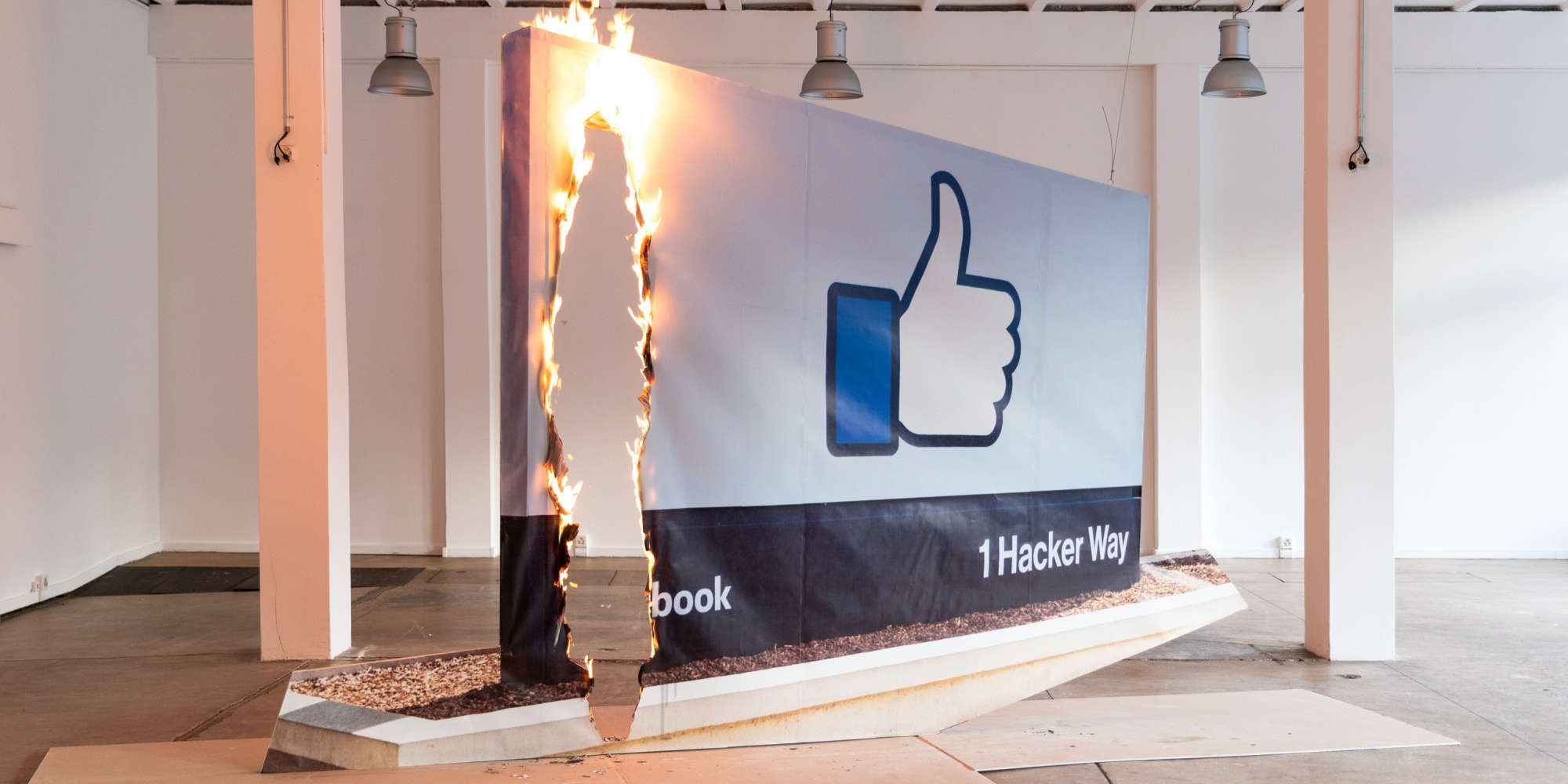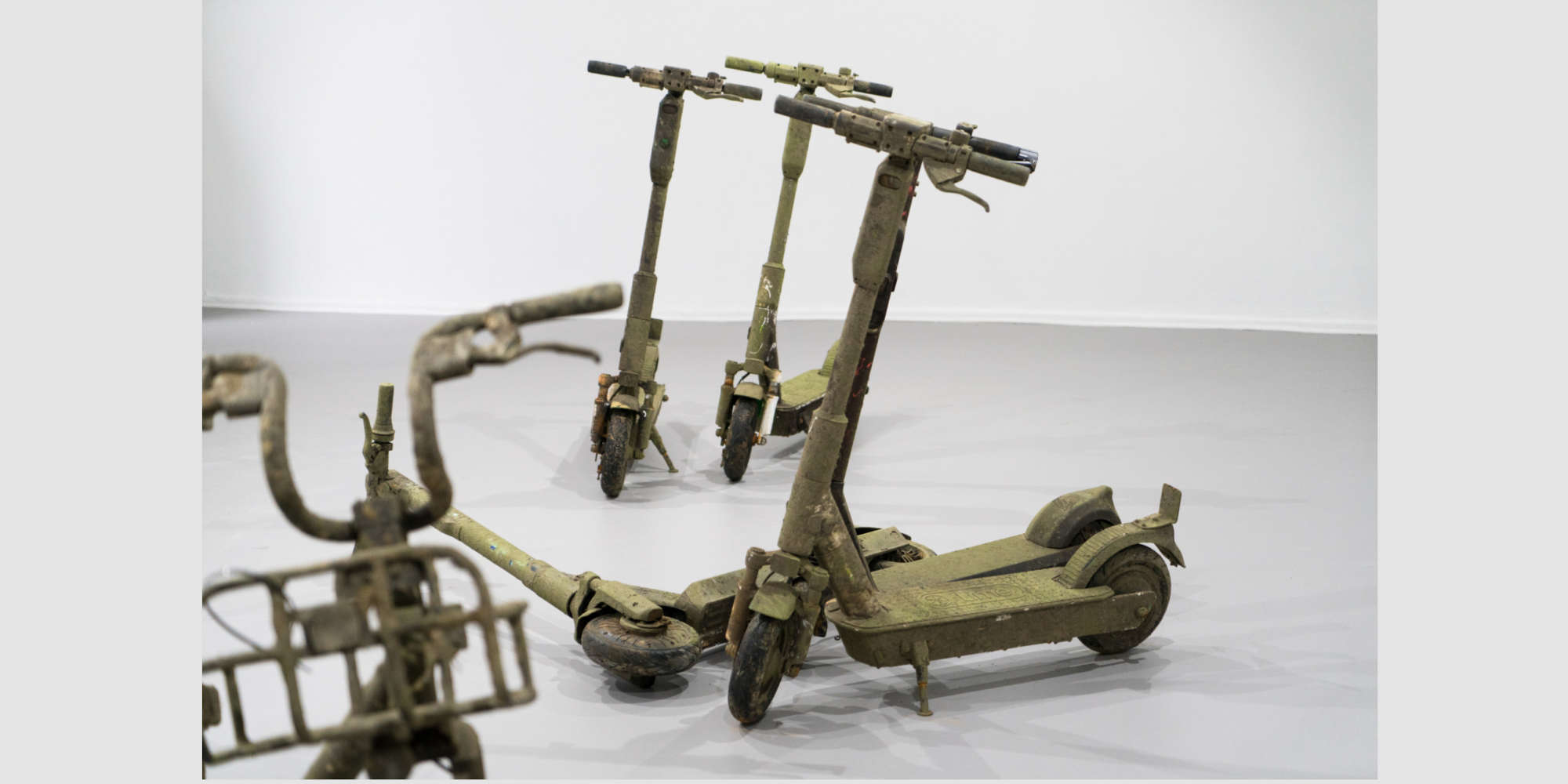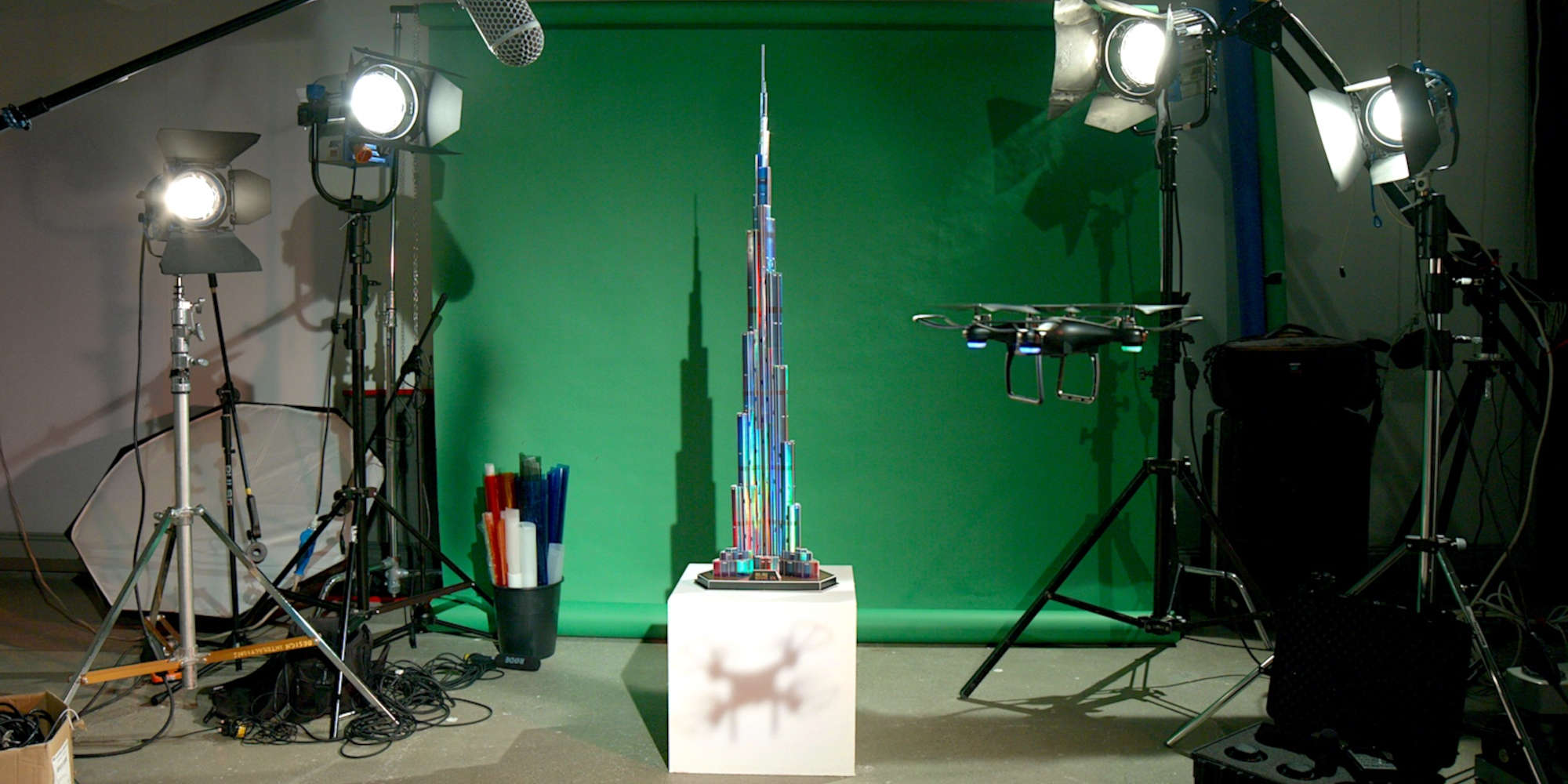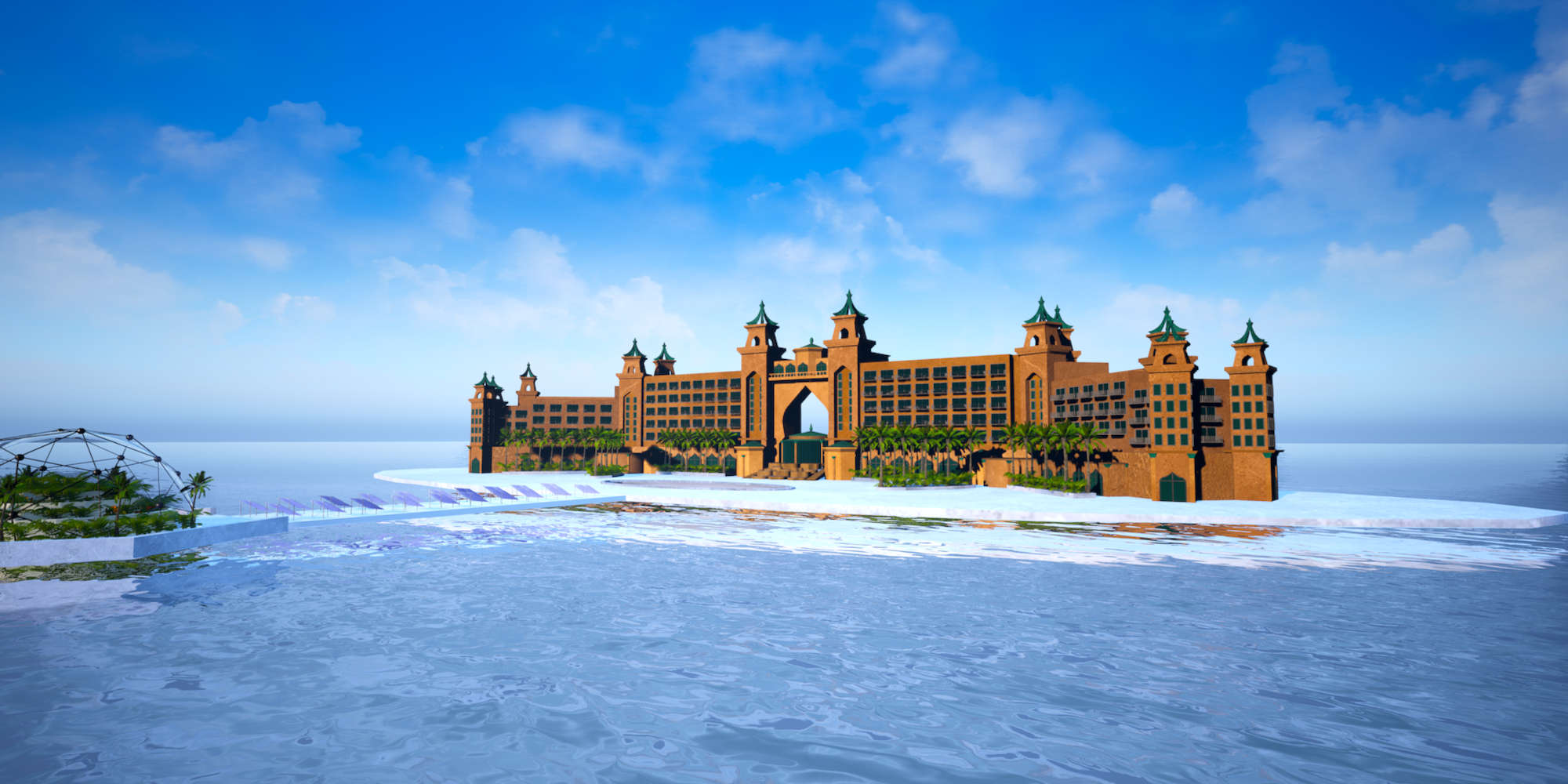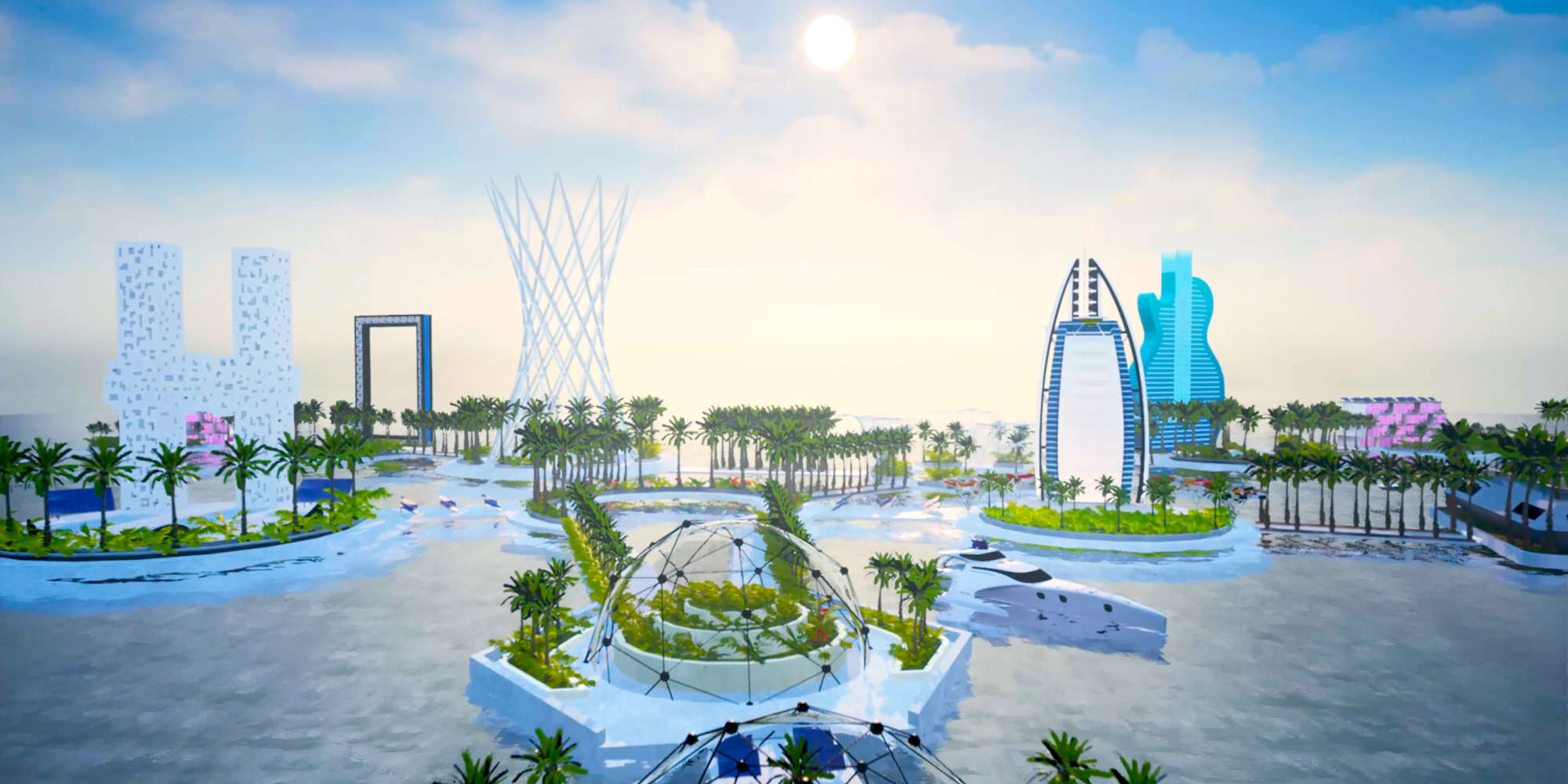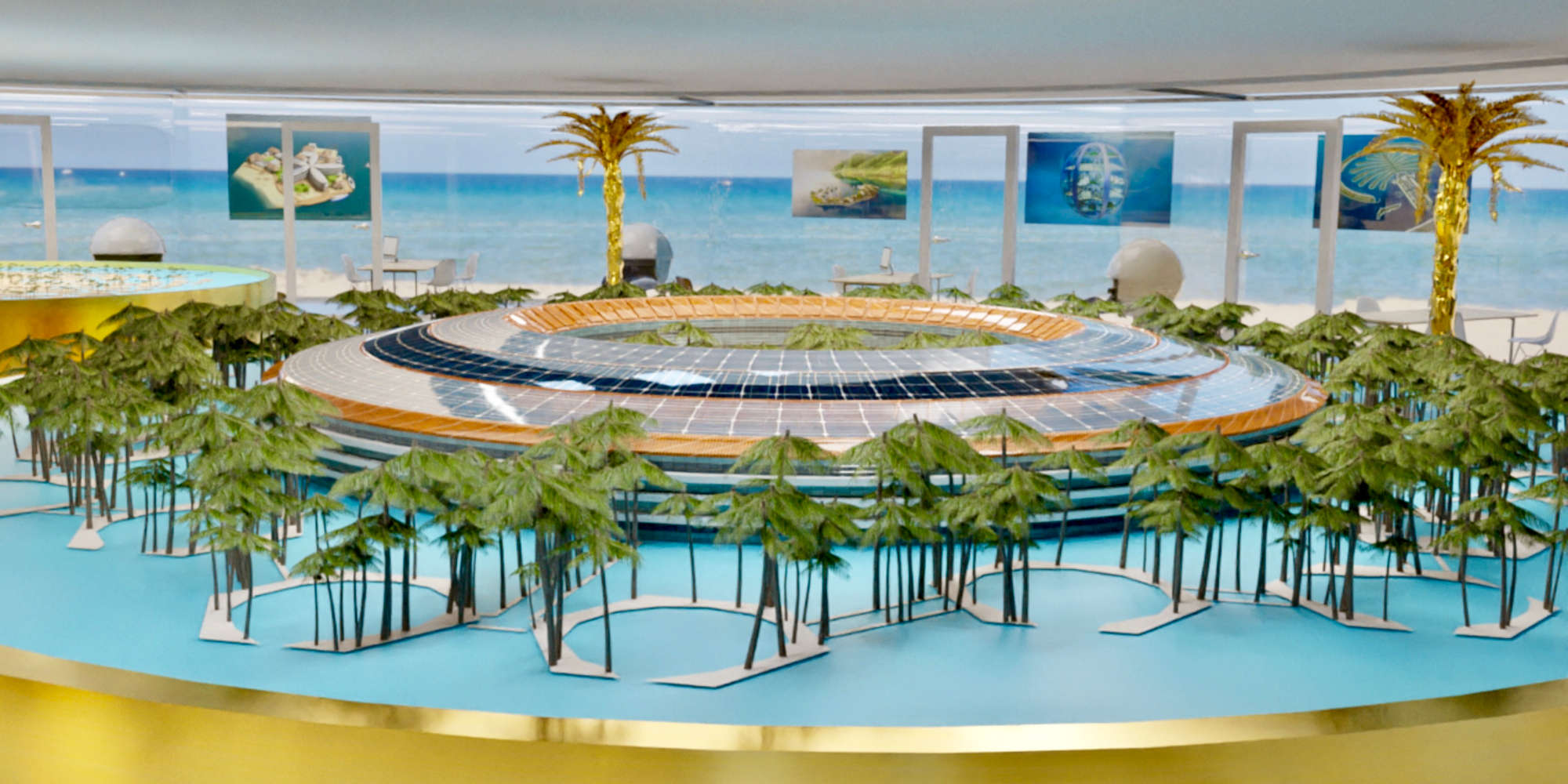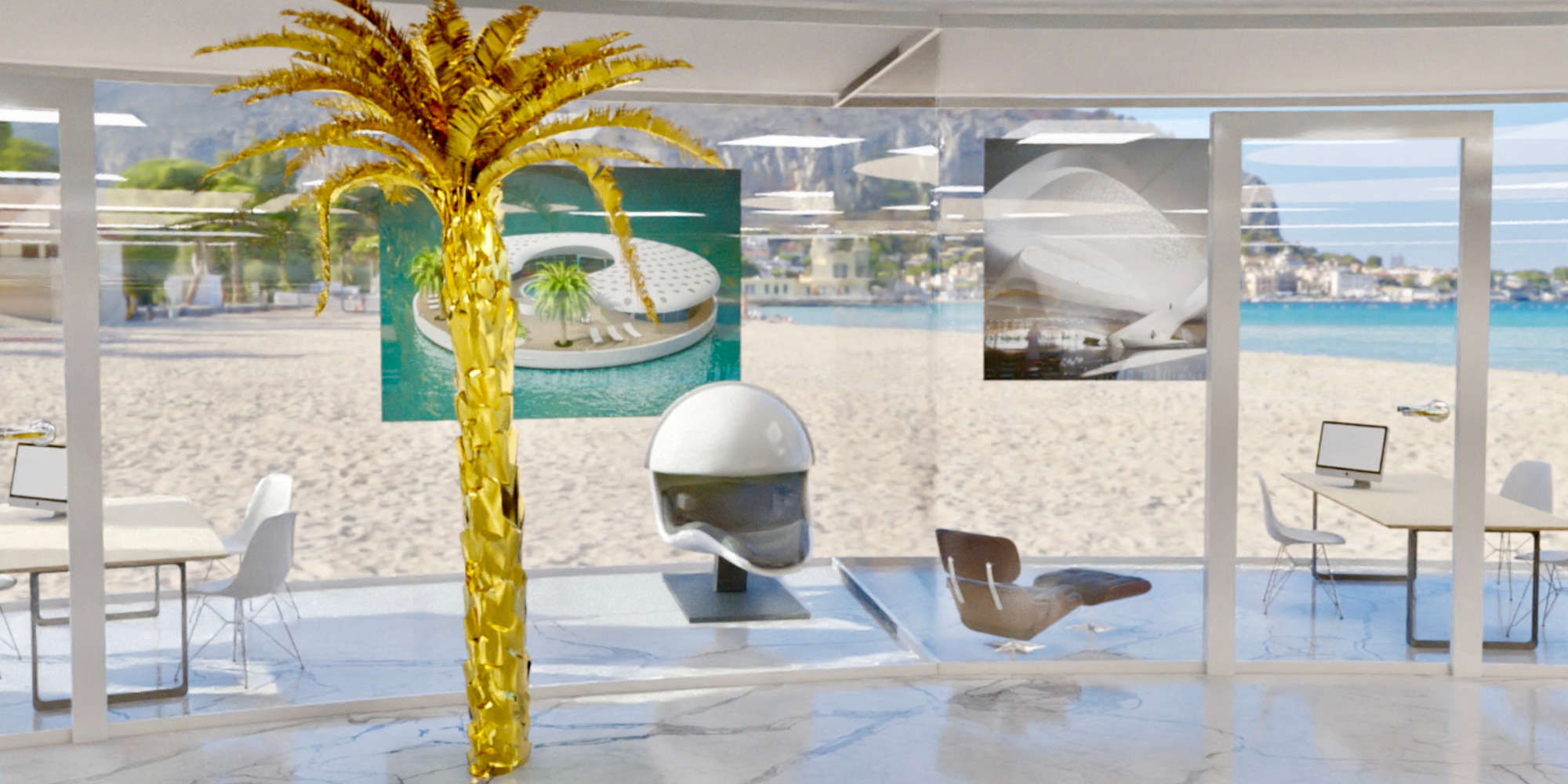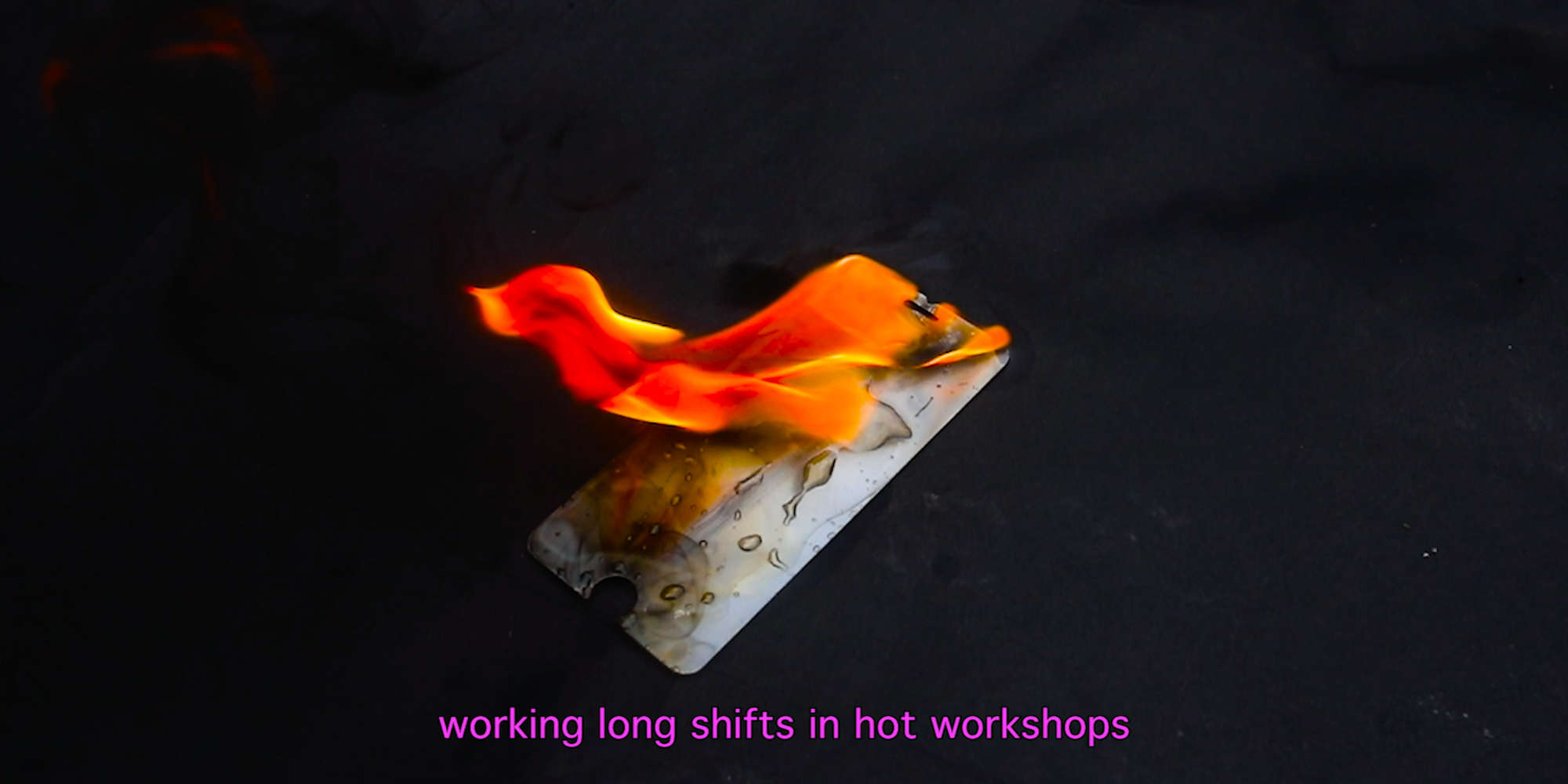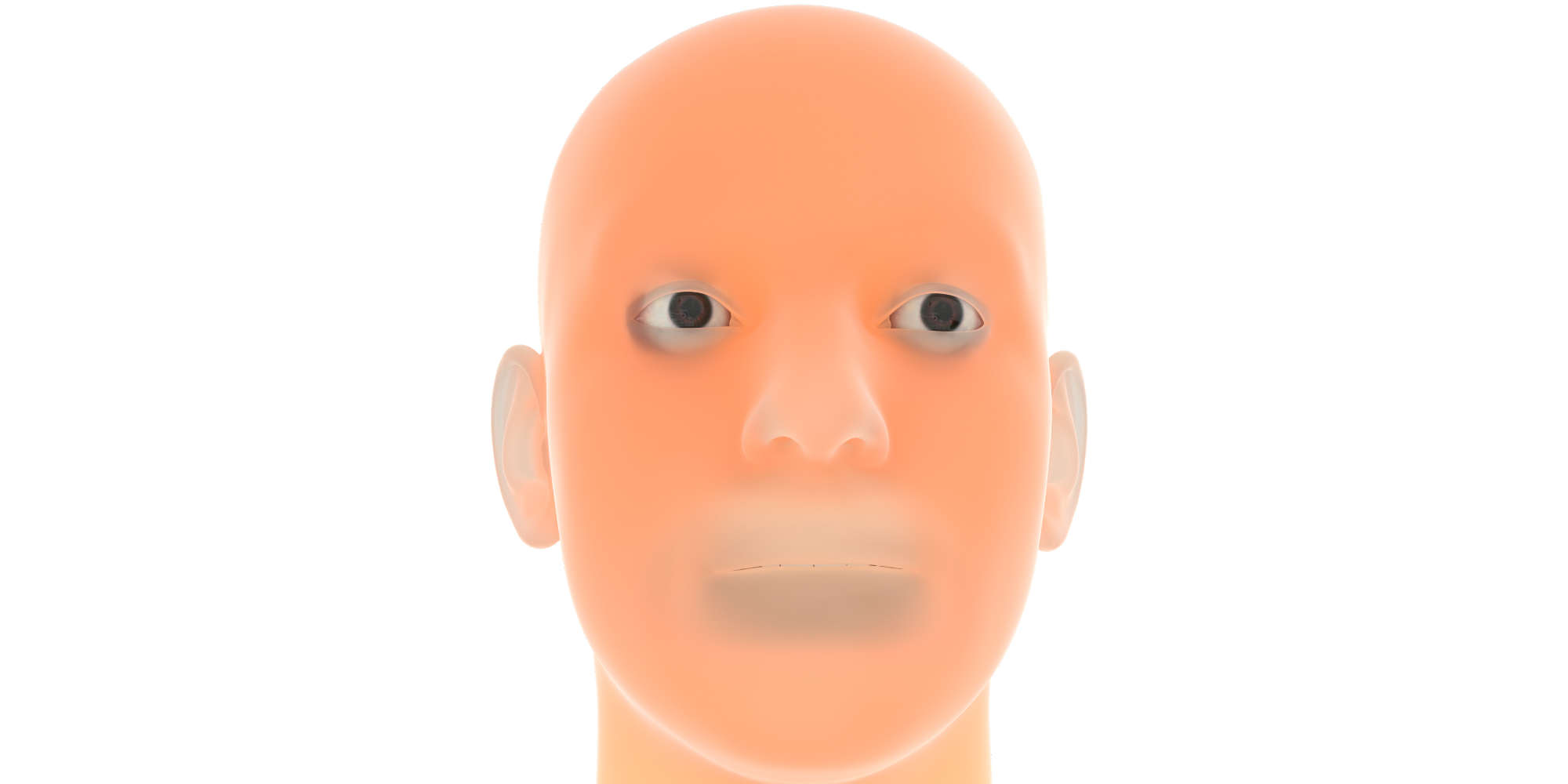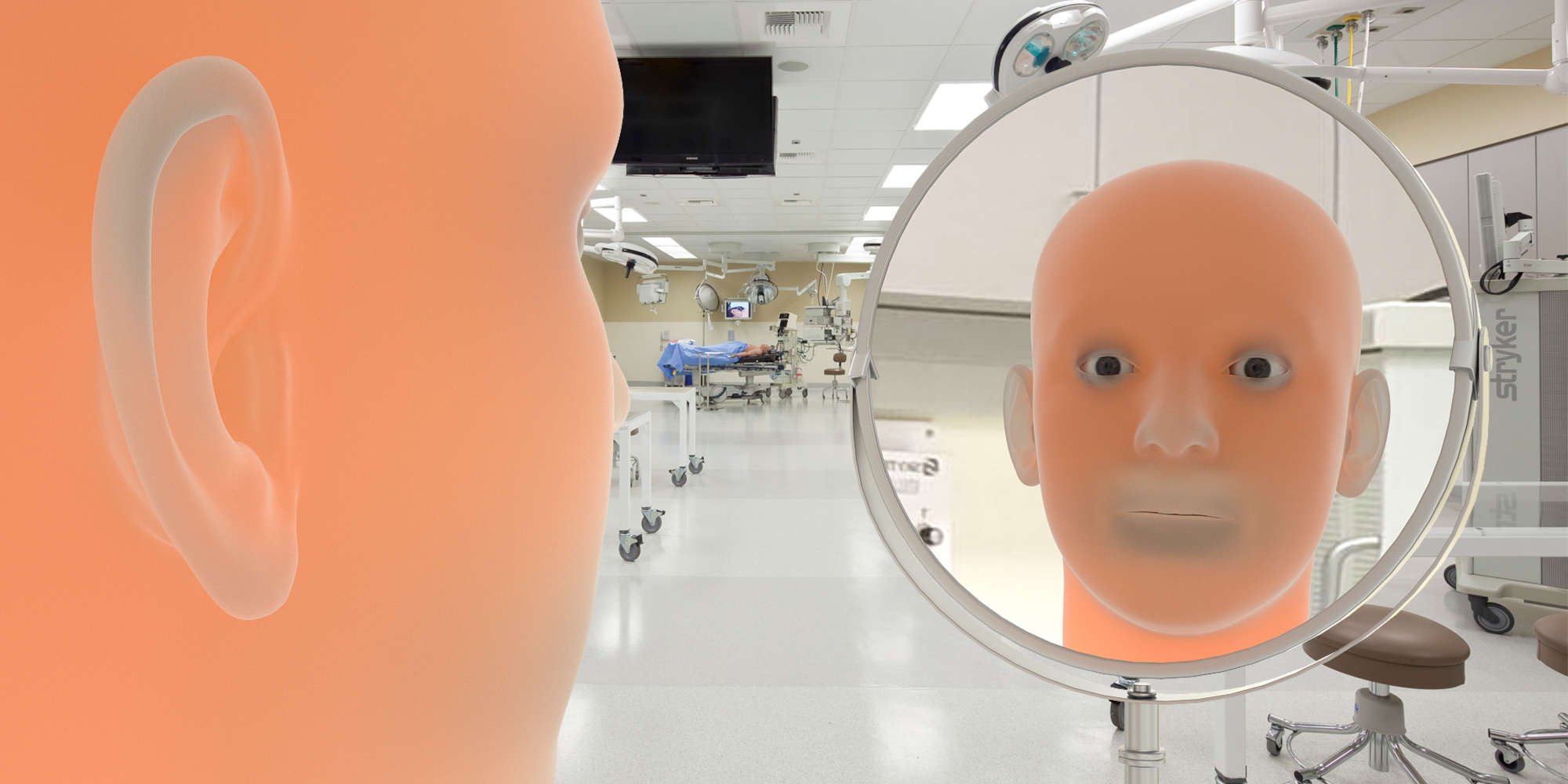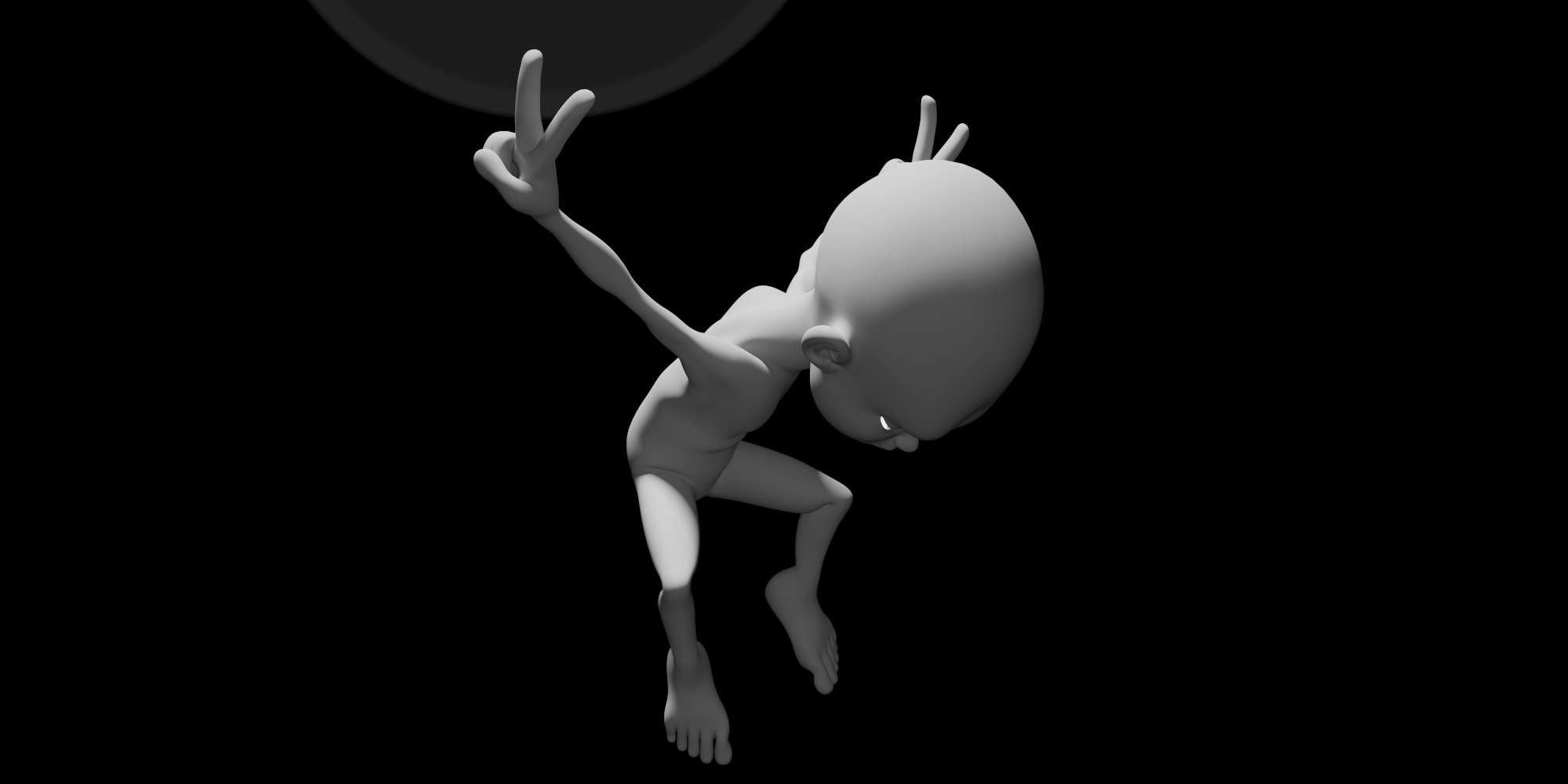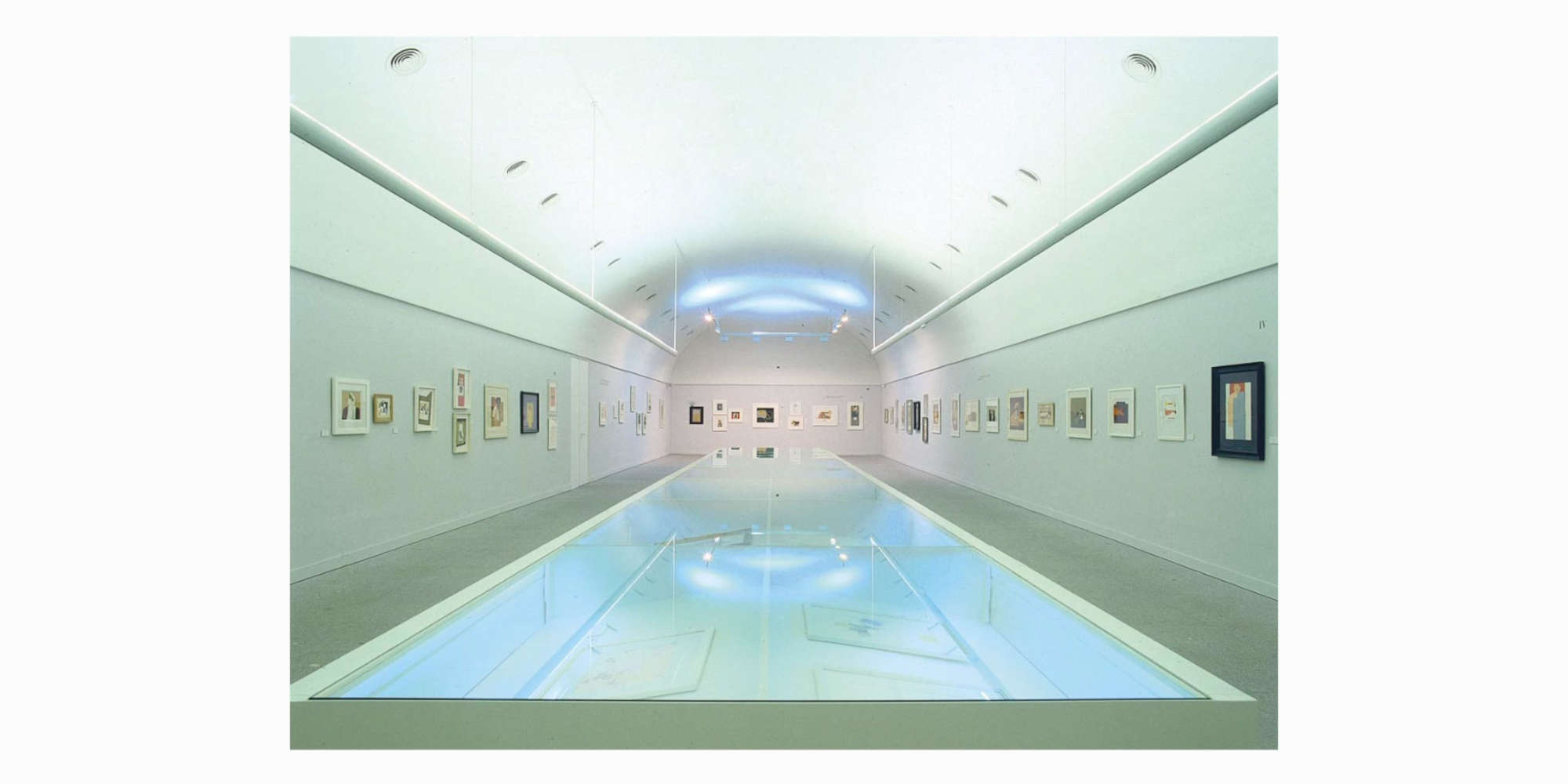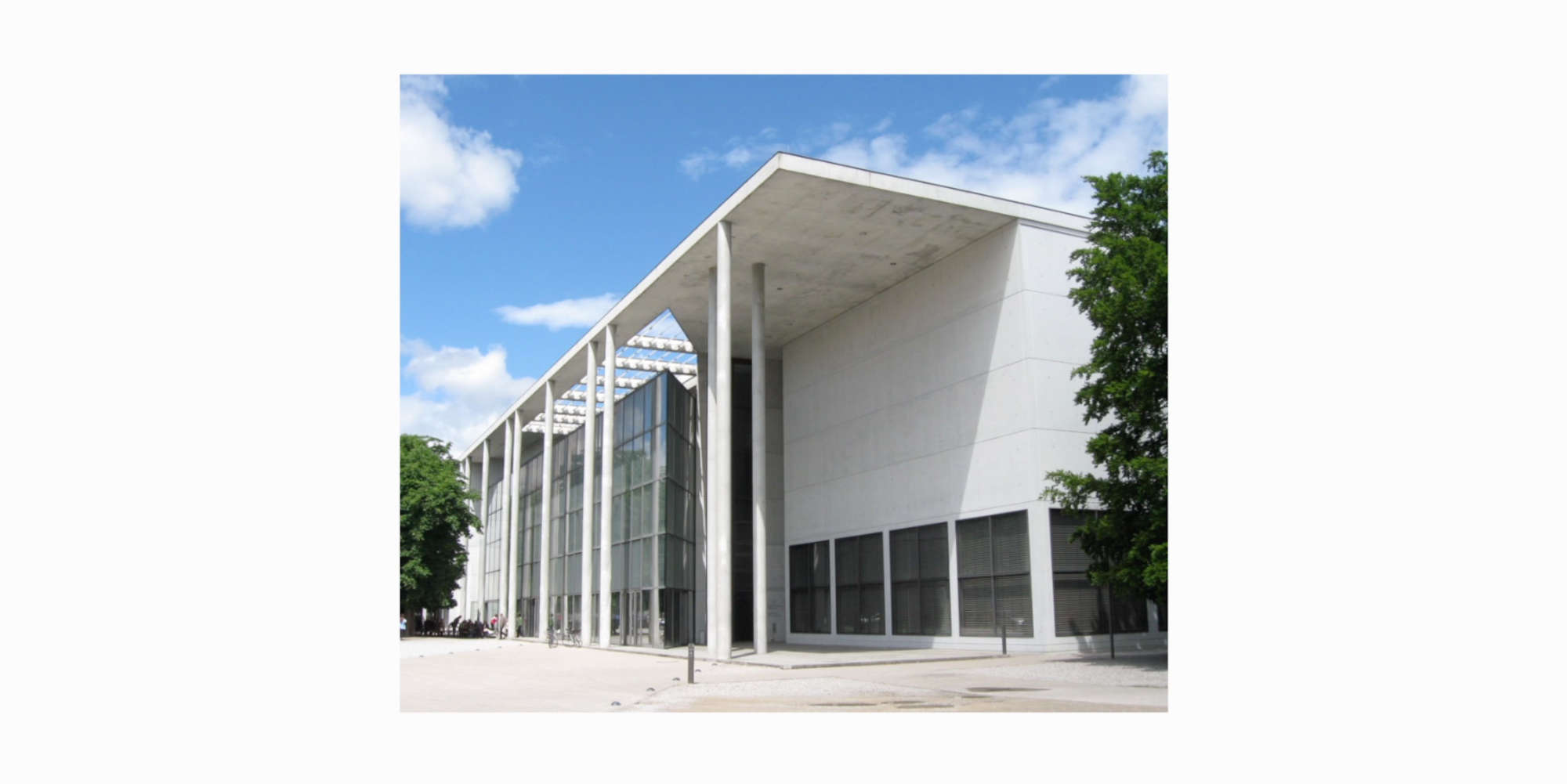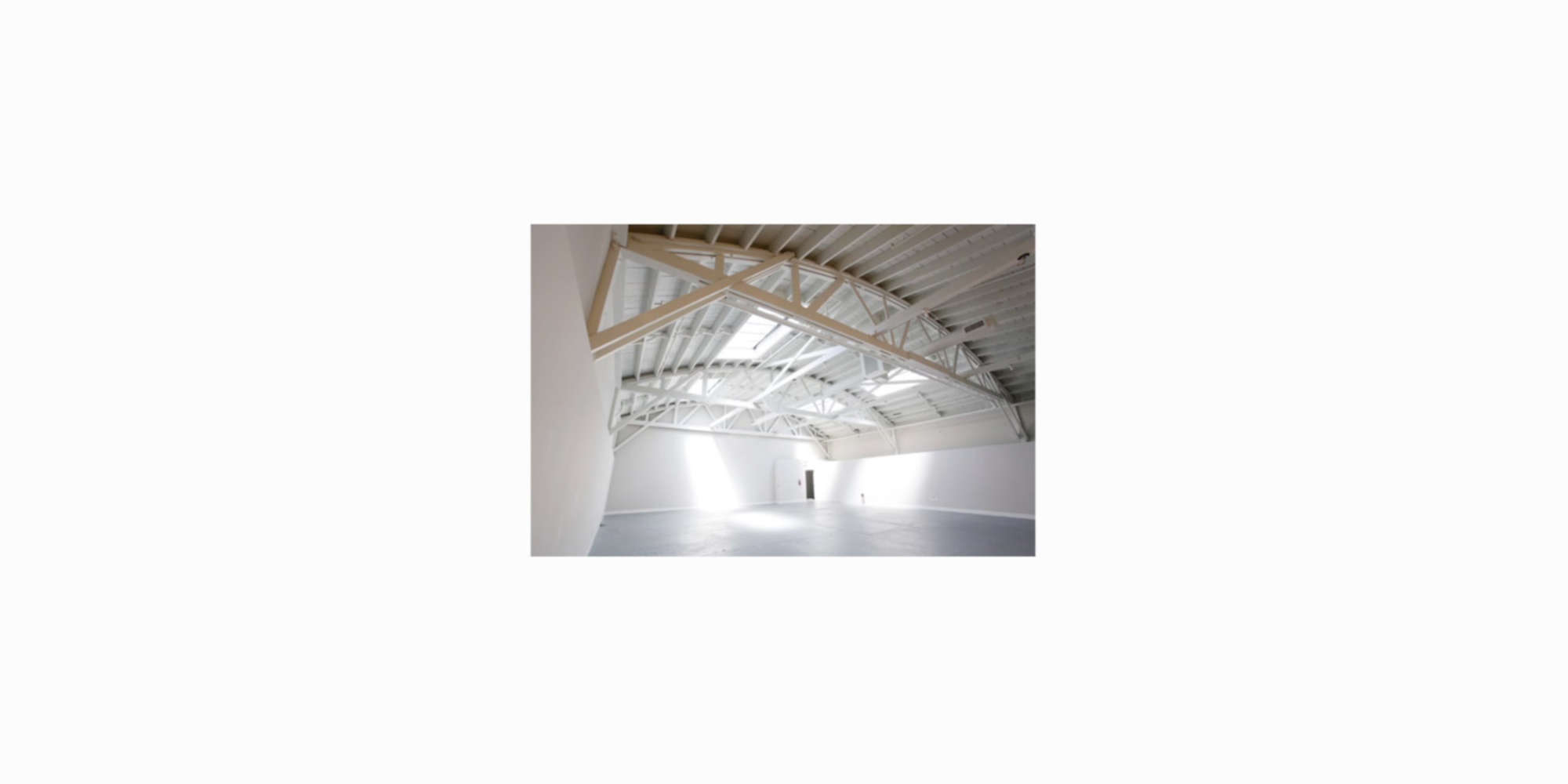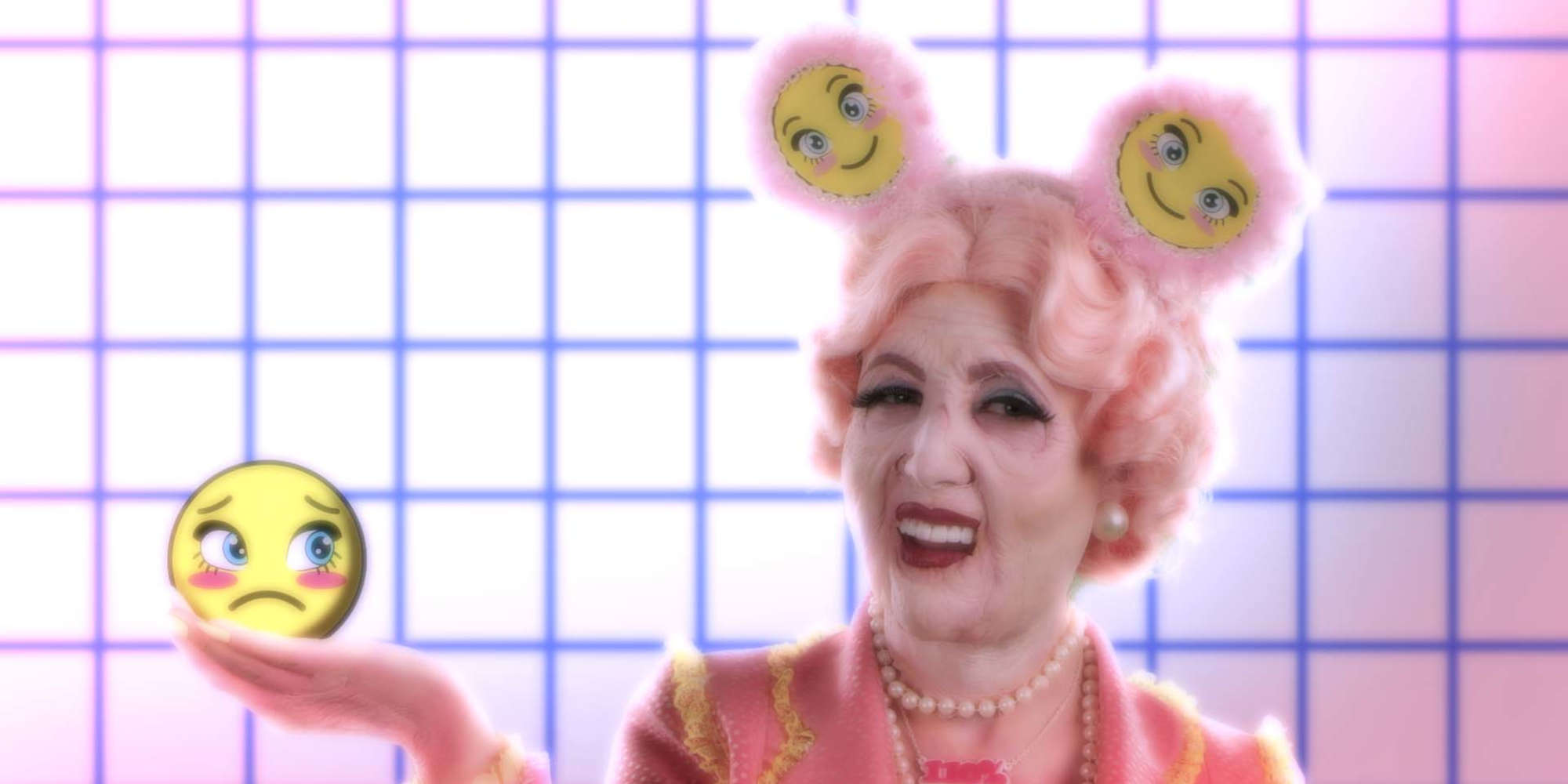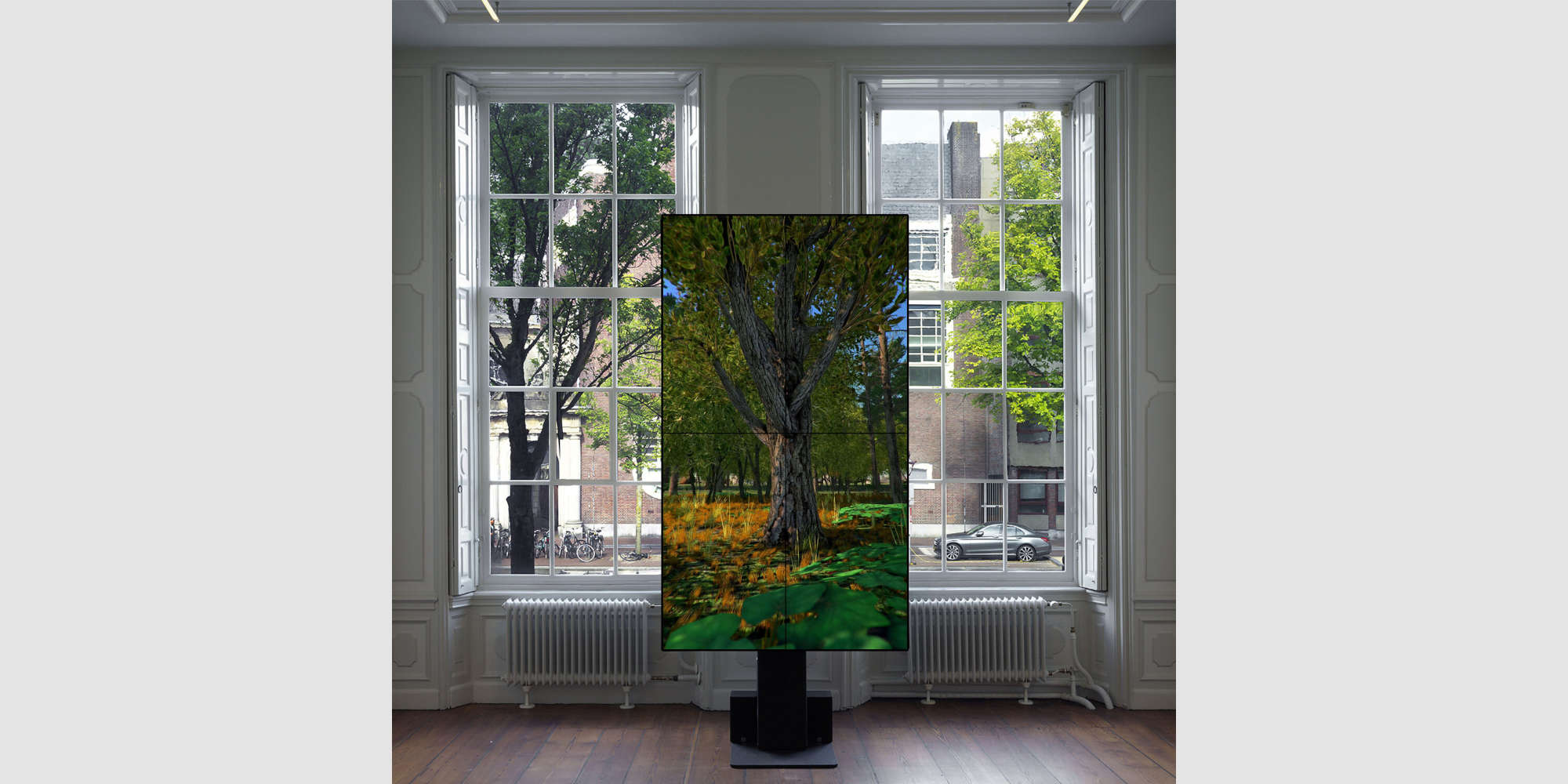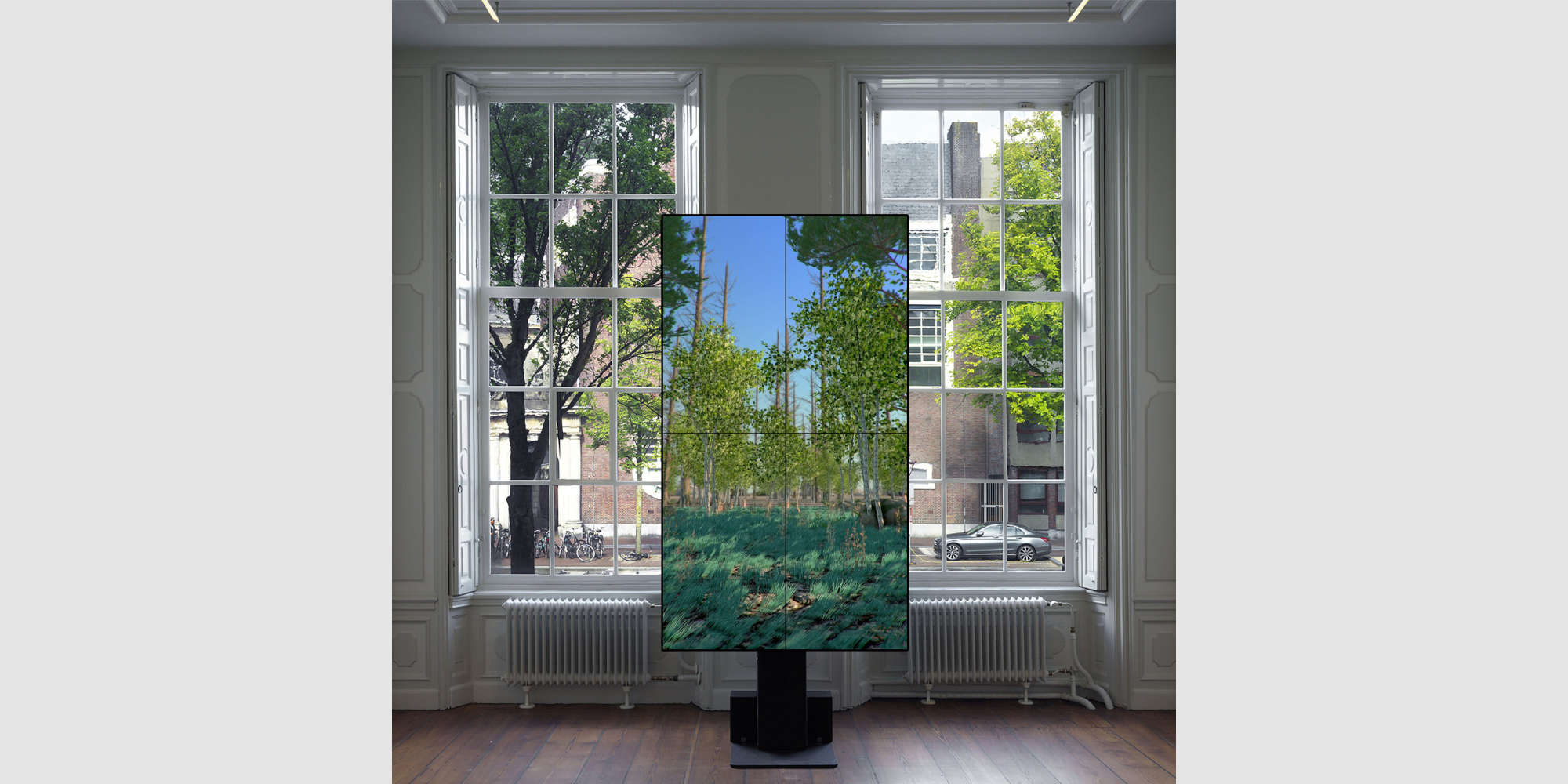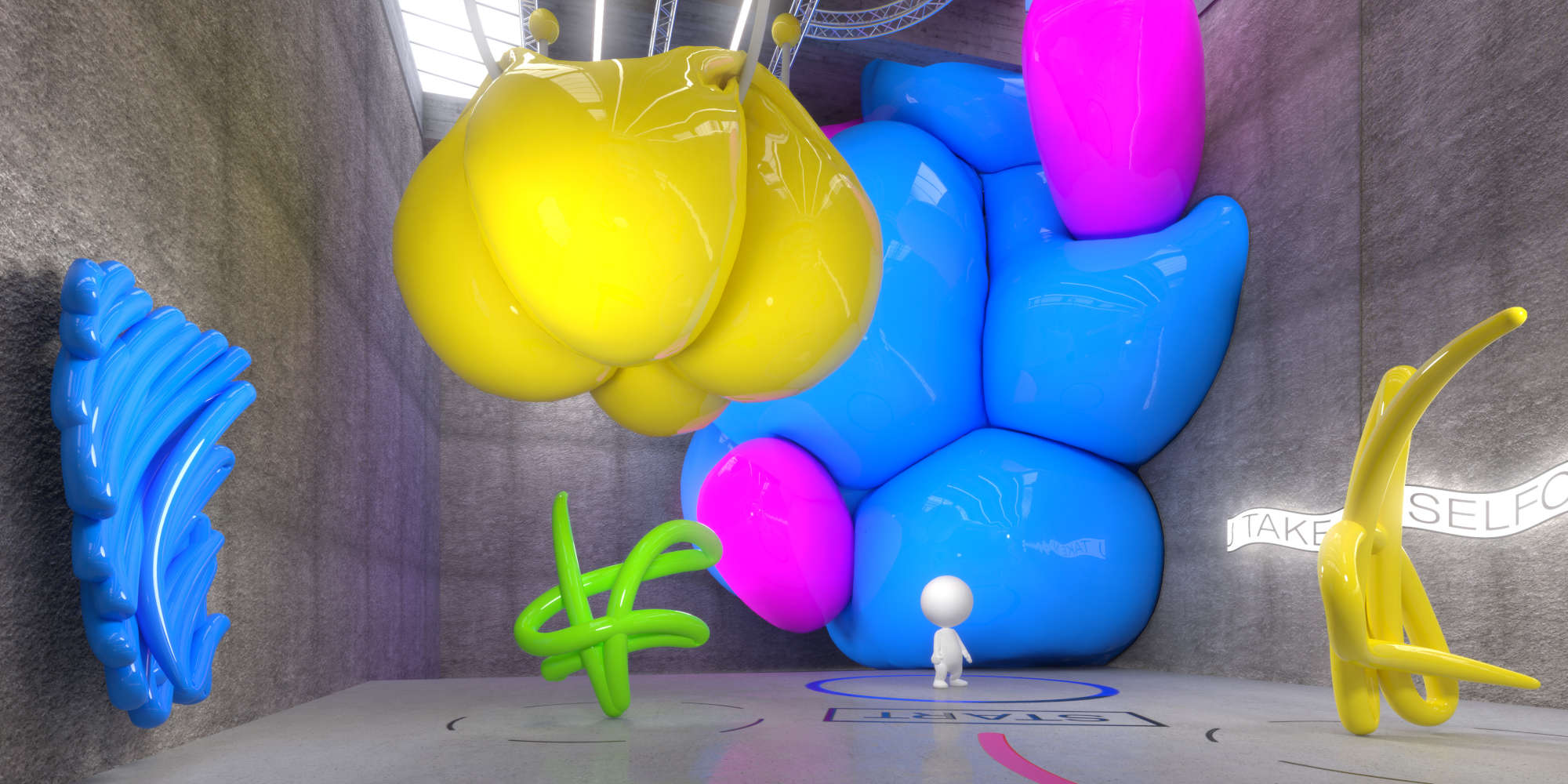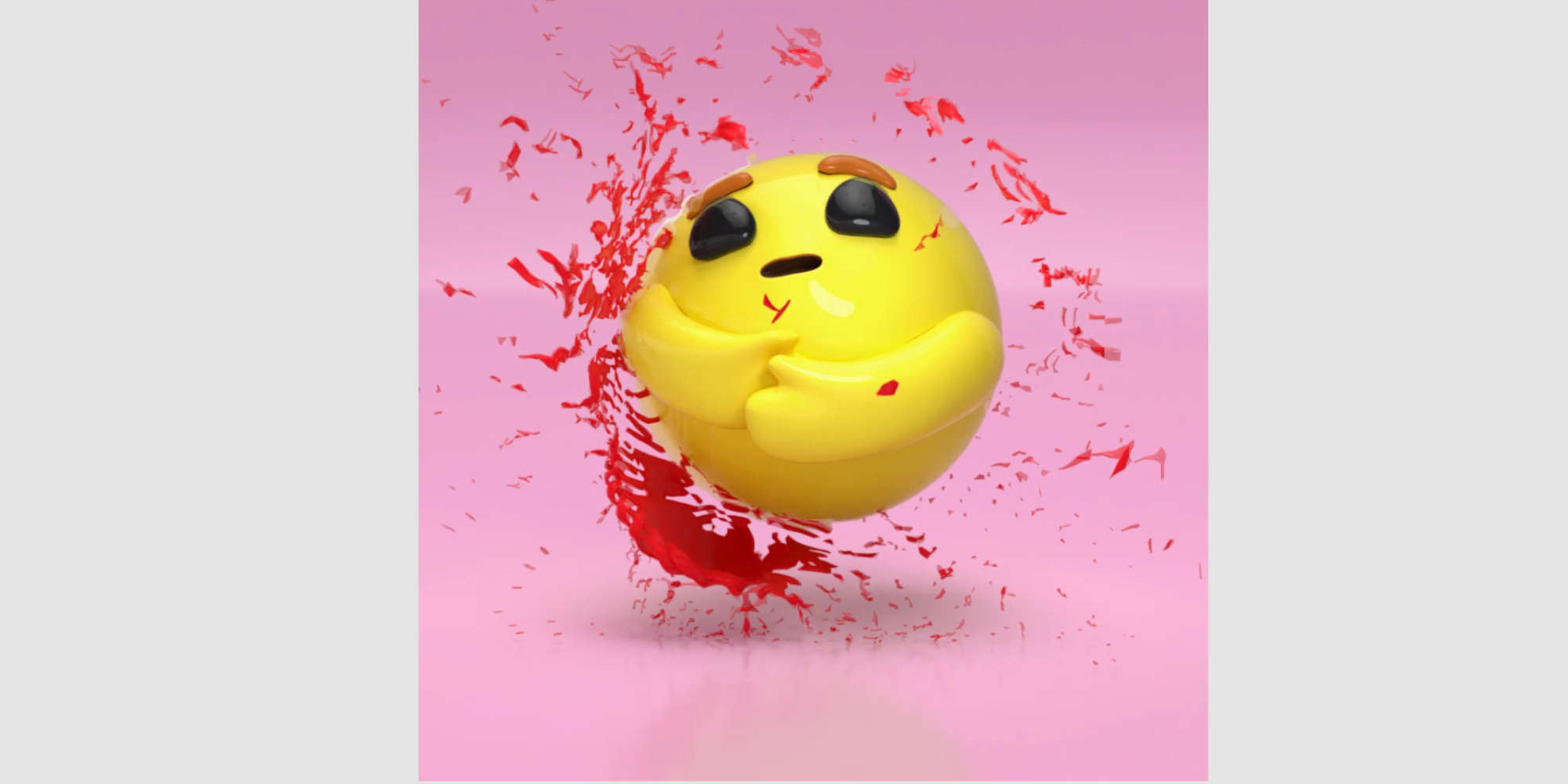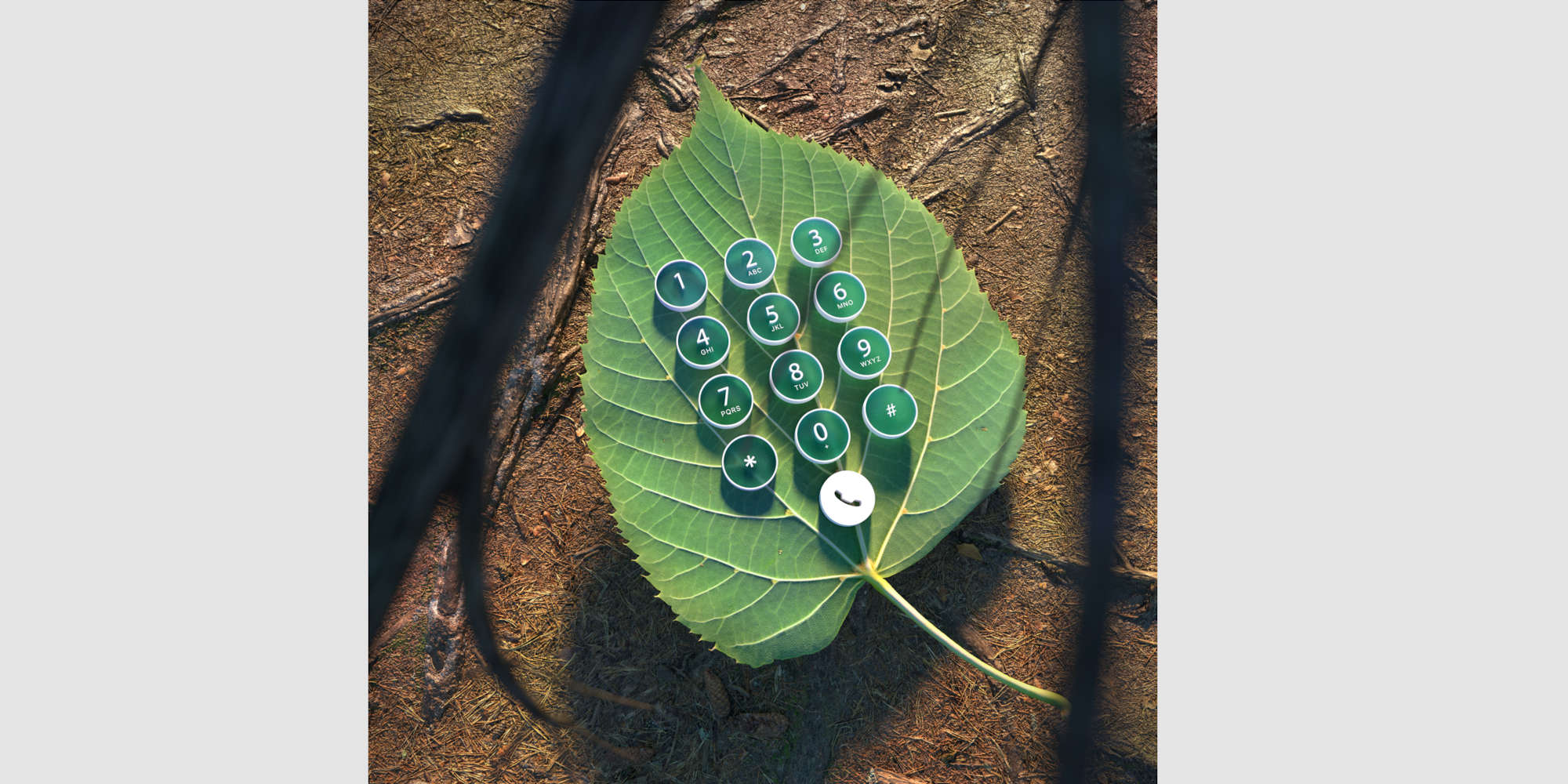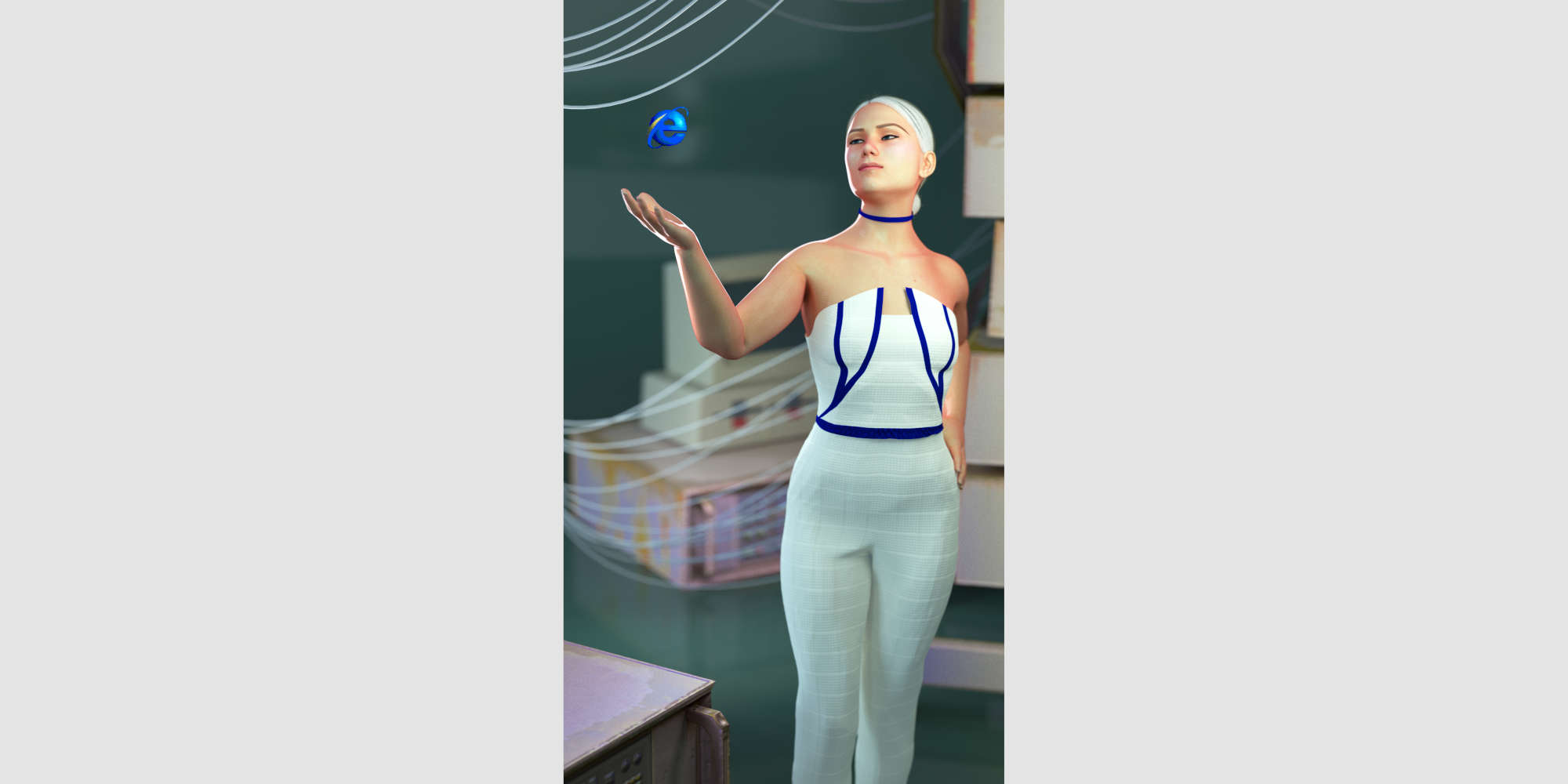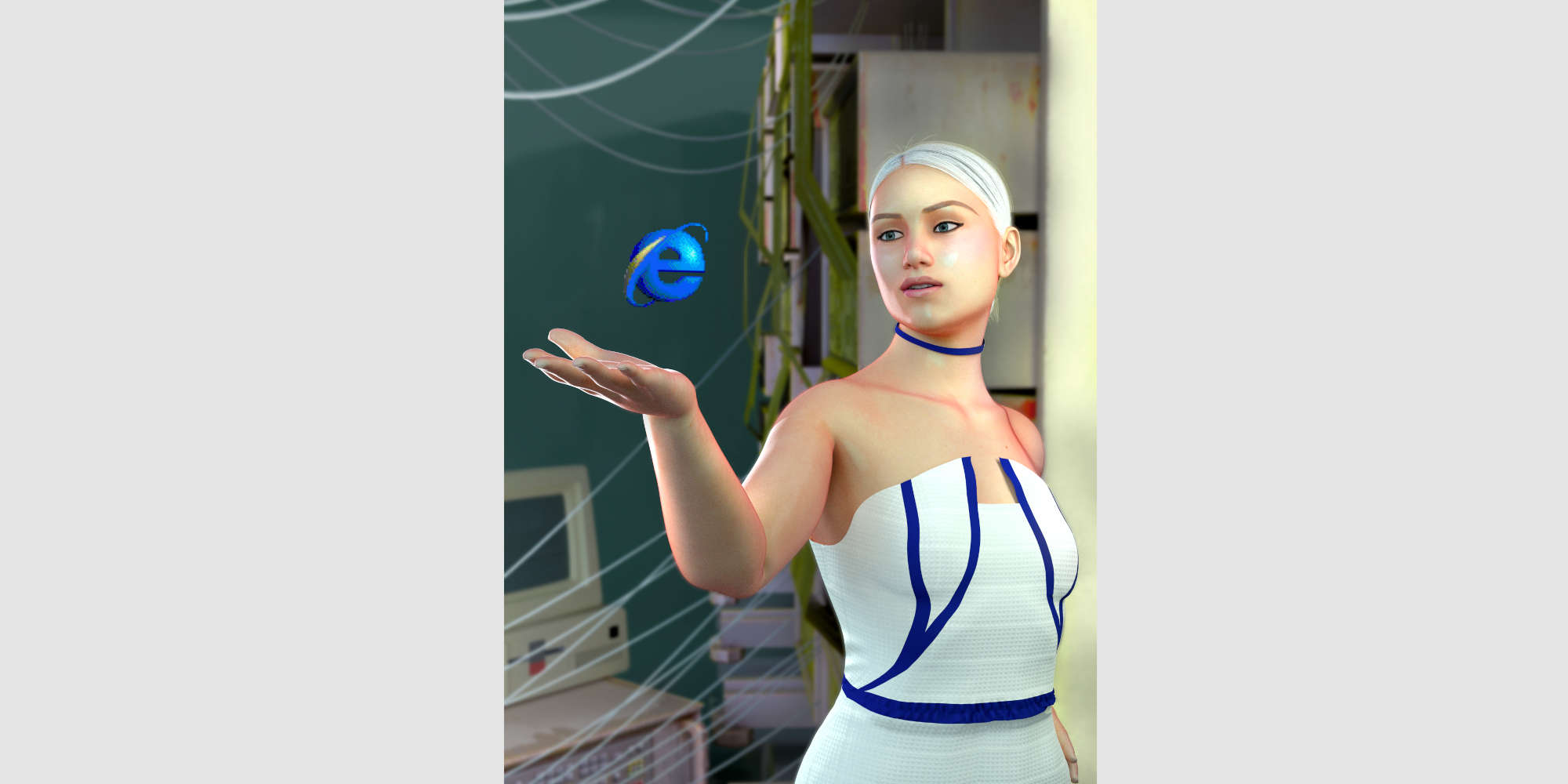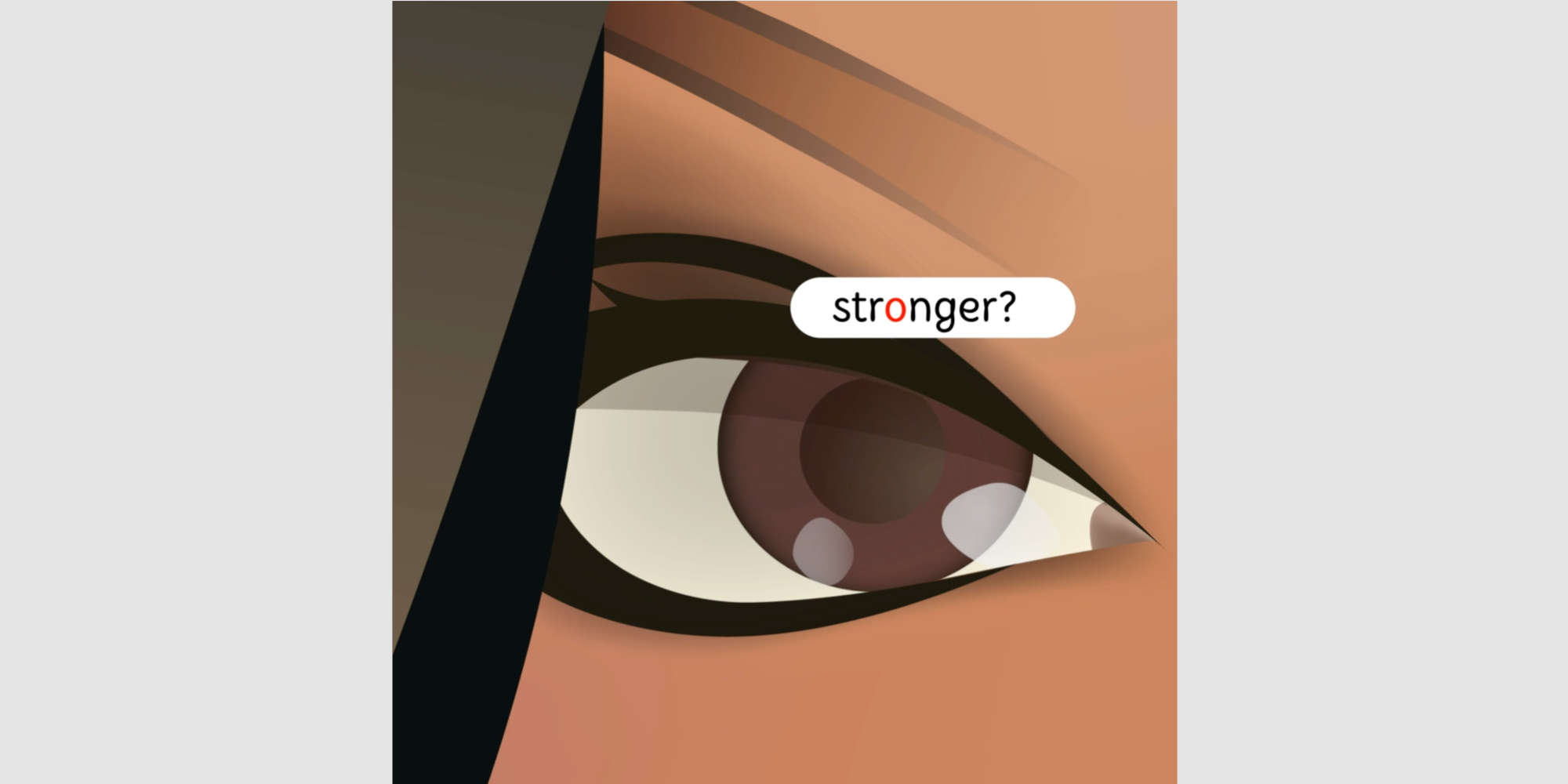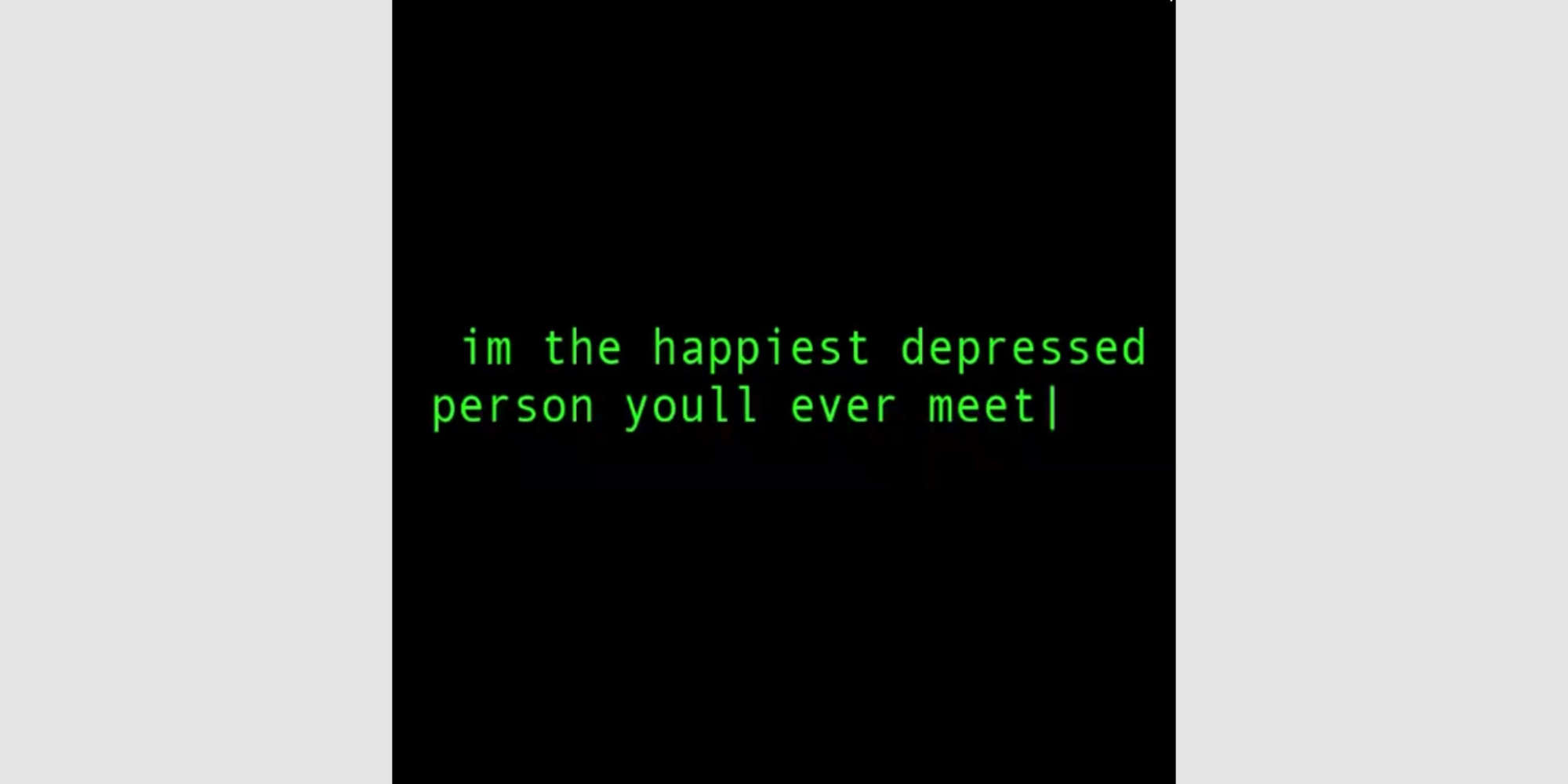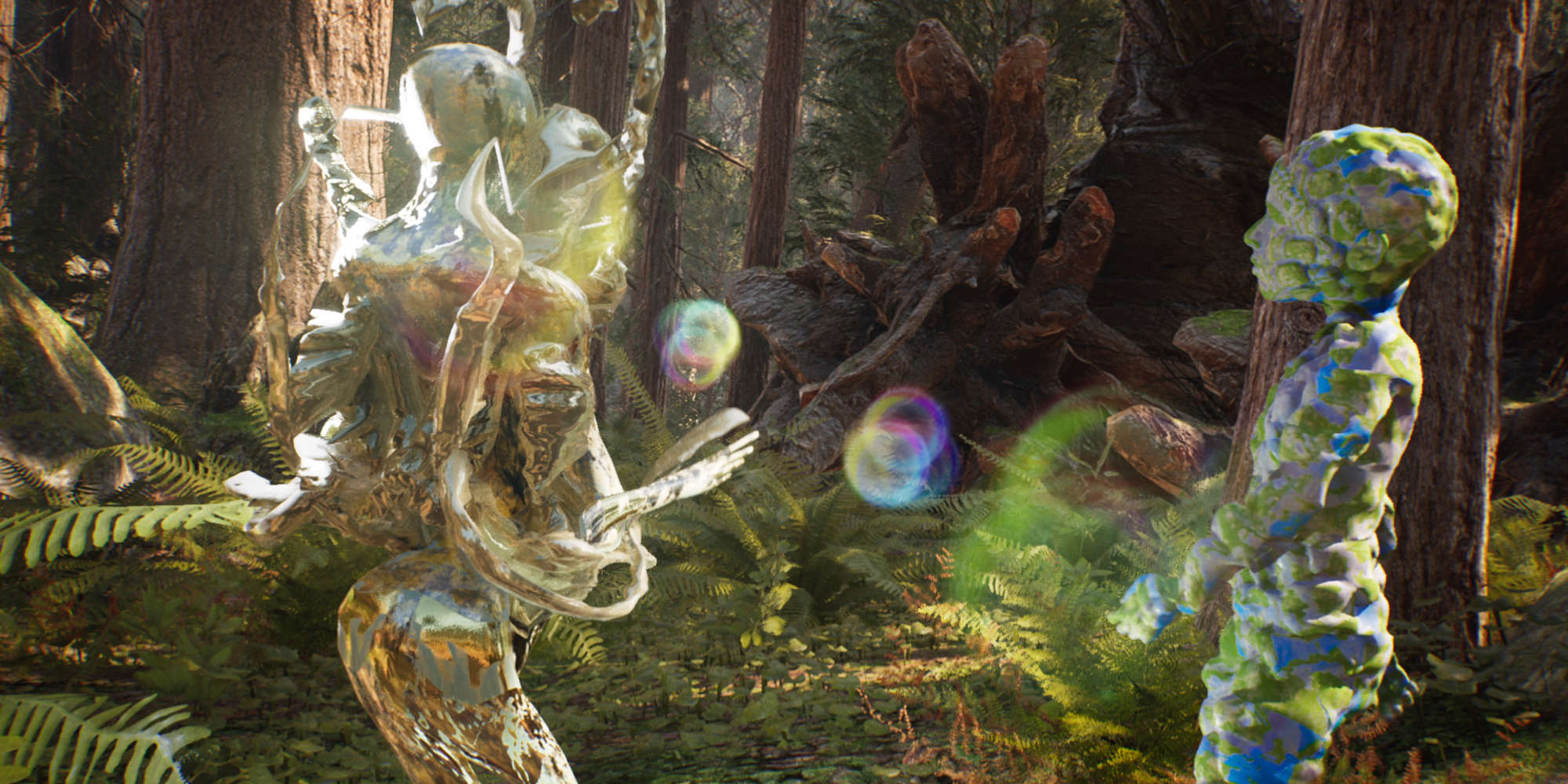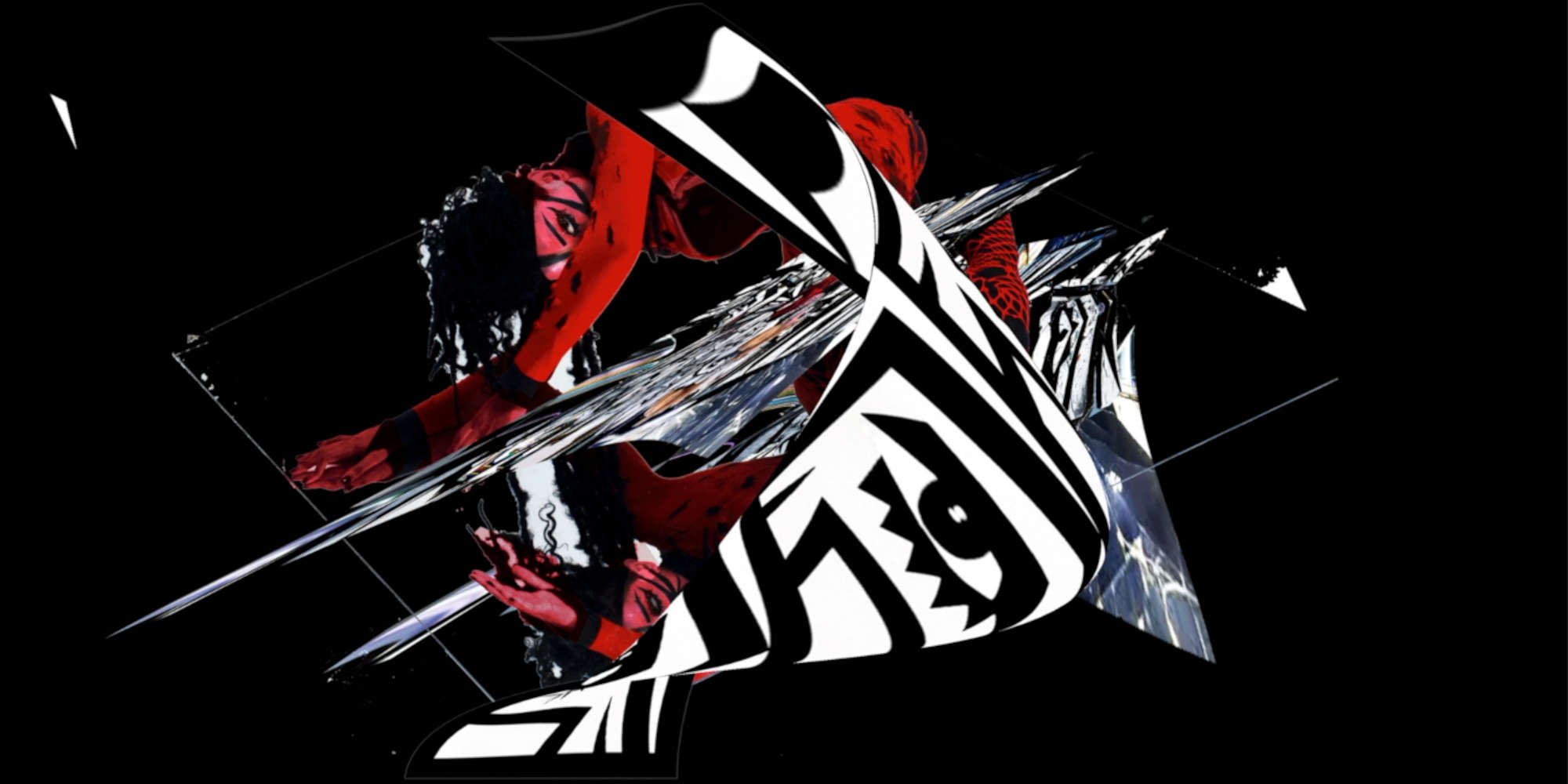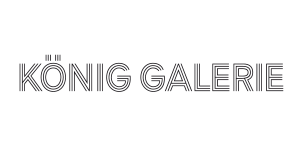The World Wide Webb by the British artist Thomas Webb is a virtual world the digital visitor enters through the browser on a smartphone. It is a multiplayer video game, a digital exhibition space and a world full of art and characters the visitor is invited to interact with. Webb recreates the social spontaneity of the world pre-Covid-19. He built a virtual world for new media artists to share their thoughts on what technology is and could be. The visitor meets AI avatars designed by Webb, to reflect the human nature and to question the use of technology in the digital age. Net art is presented in its genuine medium, the digital realm, where video art is also easily accessible.
WORLD WIDE WEBB
“It is increasingly necessary to be able to think new technologies in different ways, and to be critical of them, in order to meaningfully participate in that shaping and directing,“ writes James Bridle in his book New Dark Age. Technology and the End of Future. During the lockdown, digital devices and new technologies were nearly all that was left for the art world to connect, share and experience. The digital boom was hit by a wave of criticism of technology. Artists have always worked with new technologies, and at the same time critically question them. Experiencing a global lockdown is an excuse for utopian escapism into a game environment as the only place left to experience and interact with art.
Participating artists: Aram Bartholl, Alice Bucknell, Arvida Byström, Koo Jeong A, Stine Deja, Jonas Lund, Rachel Maclean, Tabor Robak, Manuel Rossner, Nicole Ruggiero, Sebastian Schmieg, Thomas Webb, Kesh, Keiken
Enter the exhibition through the “Visit Online Exhibition” button on the right.
Project Credits / Acknowledgements
Concept: Thomas Webb, Anika Meier
Game: Thomas Webb
Curator: Anika Meier
UNLOCK LIFE
ARAM BARTHOLL
2020, installation, rental e-scooters, rental bikes, variable
For his installation UNLOCK LIFE Aram Bartholl retrieved a number of rental e-scooters and bikes from different canals of Berlin. In fierce competition global operating startups have swamped all major European cities with rental bikes and e-scooters in large numbers in the last couple of years. The careless attitude of the startup companies result in disapproval by most of the public and careless handling by the users. The colorful pop aesthetics of these rides attracts the urban youth, who often cannot afford to ride them. Destruction and loss is a calculated part of the business which is economically and ecologically unsustainable. Typically these e-scooters and bikes get also thrown into the canals of the city.
After spending months or even years in the water, the scooters completely lost their attraction and are covered with mud and algae. Even new life can be found on these scooters in the form of small crabs and worms once pulled out of the water. UNLOCK LIFE is the signature advertising slogan of the e-scooter rental company Lime.
SAD BY DESIGN
ARAM BARTHOLL
2019
Facebook is the biggest social network company with more than 3 billion active users on Facebook products including Instagram, Whatsapp, Facebook Messenger etc. Although it is such a big company, the thumb up sign at the original headquarter Menlo Park in Silicon Valley is one of the few place one can actually go to physically visit Facebook in public. People often take photos in front of that sign. SAD BY DESIGN is a performative sculpture. The scaled flat paper model of the sign catches fire out of nowhere and burns down.
Aram Bartholl, Sad By Design, 2019, Gif, Performative Sculpture, Wood, Paper, Fire & HD Video, 4 × 2,7 x 1,2 m
Aram Bartholl, Unlock Life, 2020, video, installation, rental e-scooters, rental bikes, dimensions: variable, HD video, 1:04 min
E-Z KRYPTOBUILD
ALICE BUCKNELL
2020
E-Z KRYPTOBUILD responds to architecture’s role in global inequity and the current climate emergency. Utilizing tactics of speculative fiction and working across multiple media including moving image, sculpture, and environmental design, the project reflects on the language and aesthetics of disaster capitalism and examines the ways in which architecture and real estate are embroiled in these utopian fantasies of “a fast- track ticket out of climate change”.
Using satire, speculation, and AI technology, E-Z KRYPTOBUILD exaggerates our current condition through a ficitonalized real estate company offering elite individuals luxury escape pads for the end of times. The project is directly informed by the artist’s own experiences as an architecture and design critic, and stems from witnessing these neoliberal ideologies espoused by architects and developers firsthand.
Alice Bucknell, Still from ‘E-Z Kryptobuild: The HQ’, single channel HD video, 2020
All images copyright by the artist.
DISEMBODIED DAUGHTER
ARVIDA BYSTRÖM
2018
Technology has always been present in Byström’s works in the form of smartphones and laptops. She speaks to a generation of people who pick up their smartphones first thing in the morning and only put them down when they are about to shut their eyes at night. Does technology rule over us and our bodies, or are we the ones who rule over technology?
In the video DISEMBODIED DAUGHTER, Byström allows Siri, the female voice assistant on iPhones, to have her say: “I am genderless. Like cacti. And certain species of fish.” Siri transcends human concepts of gender. She appears more like a mother than a secretary and is frequently interpreted as a voice without a body. “We talk about technology as if it were disembodied, but it is not,” Byström says. For this reason, iPhones wear panties in her work.
Arvida Byström, Disembodied Daughter, Still, 2018, Video
Audio: Anton Ahlberg
Director of Photography: Malin Gutke
FOREIGNER
STINE DEJA
2018
Stine Deja’s video FOREIGNER (2018) features an android singing “I wanna know what love is”, the 1984 hit from the homonymous 80s rock group, to himself in a vanity mirror. Immersed in a clinical environment, the android appears as a new born learning to experience emotion through a widely distributed and culturally ubiquitous musical touchstone. Drawing from algorithmic logic, the video satirises the ways in which machine learning recognizes patterns and repeats them regardless of what those patterns are while being a world away from actually identifying or knowing ‘what love is’.
Stine Deja, Foreigner, Still, 2018, Video, 5:11 min
MYSTERIOUSSS
KOO JEONG A
2017
Demonstrated cultural agencies through technography that subscendences an intrinsic access bisociated in different mental phenomena based on analogies, metaphors, parable, allegories, jokes, identification, role-playing, acting personification, anthropomorphism as for transcendental subject correlated into the imaginary spectrum and for luminous celestial human being into the extended time and space.
Koo Jeong A, MYSTERIOUSSS, 2017, Video, 3:00 min
CURATED BY
JONAS LUND
2013
CURATED BY displays documentation images from an array of art institutions and museums to the voice announcing different attributes used to describe their curators, as automatically scraped by the artist to extend his personal art world database with curatorial information.
Jonas Lund, Curated By, Still, 2013, Video, 2:10 min
FEED ME
RACHEL MACLEAN
2015
Candy coated and colourfully confected, Rachel Maclean’s films skewer the habits and preoccupations of contemporary society. FEED ME is her most ambitious and audacious project to date – a checklist of human cravings and failings that doubles as a hypermodern status update on the Seven Deadly Sins, with its swipes at the commercialisation (and sexualisation) of childhood and an equivalent infantilisation of adult behaviour. Featuring a rogue’s gallery of memorable characters (all performed with extraordinary élan by Maclean herself), FEED ME is a starburst shock to the taste buds that leaves you wanting more.
Text by Steven Bode, Director of Film and Video Umbrella
Rachel Maclean, Feed Me, 2015, Digital Video, 60 min, Still, Commissioned by Film and Video Umbrella and British Art Show 8 with support from Creative Scotland, Courtsesy: the artist
NORTHSTAR
TABOR ROBAK
2019
NORTHSTAR is a procedurally generated simulation of an infinite walk through an ever-changing virtual landscape. Robak’s original software runs on a custom built PC and is shown on a free standing 4-channel video wall. The work adapts to the time of day as well as the latitude and longitude of where it is displayed so that the lighting conditions outside are reflected within the work’s dynamic sky and weather system. The software is programmed to “plant” virtual seeds along the horizon that grow as the camera approaches them, and features 320 types of trees, bushes, rocks, flowers, grasses and dirt.
Tabor Robak, Northstar, 4-channel, 4K generative animation, original software, infinite duration
Image credits: Photo by Gert Jan van Rooij
SURPRISINGLY THIS RATHER WORKS (MACHINE LEARNING)
MANUEL ROSSNER
2020
SURPRISINGLY THIS RATHER WORKS (MACHINE LEARNING) by artist Manuel Rossner is a spatial intervention at ST. AGNES / KÖNIG GALERIE and at the same time a virtual extension of its exterior. The entire gallery is transformed into a gaming environment inspired by the 1990s game show AMERICAN GLADIATORS and so-called gyms that are used for cutting-edge research in artificial intelligence by companies such as OpenAI in San Francisco. The visitor turns into an avatar and interacts with objects that are part of a parcours, while AI is being trained in the same space and learns to navigate the space with the help of a neural network. These objects broaden the perspective on what painting and sculpture can be in the digital realm.
VISCOSITY STATUE
Manuel Rossner
2015
To showcase the capabilities of a software that is mainly used to simulate liquids in high end film productions, the developers have used the model of a seemingly ancient greek statue to test a high viscosity fluid. Manuel Rossner combined the sample with another tutorial that teaches how to create hyper realistic caramel surfaces to advertise chocolate bars. By using found tutorials and sample content, Rossner highlights the workings of the 21st century illusionary apparatus that shapes commercial image culture today.
Manuel Rossner, VISCOSITY STATUE, Video Loop, 2015, 0:08 min
BIOTECH
NICOLE RUGGIERO
2020
In the year 2020, it is important that humankind considers the implications of technology on the environment. Our phones are made with rare earth metals that exist in limited quantities. Rare earth metals are capable of speedy conduction, however current mining sources may run out in 50-years and minors are beginning to consider mining places like The Amazon and even asteroids in our solar system. The process of extracting these elements also has a huge impact on the environment and the communities surrounding the mine sites. It is important for individuals producing and consuming new technologies to be aware of this impact and to start considering more earth-friendly methods to manufacture these goods.
BIOTECH combines both leaf and phone as a think-piece for viewers to begin contemplating and speaking about these issues in order to start working on developing more environmentally beneficial solutions.
WWW.IZARD
NICOLE RUGGIERO
2020
The hero character is a personification of the mysticism behind the creation of the internet. She is the force that both births and manipulates the most traditional method of online communication, the internet browser. The character, otherwise known as www.izard, cycles through icons from the earliest browsers in 1990 to the most contemporary browsers in 2020. She has a dominant and powerful persona that is conveyed by the way she manipulates the browser icons with confidence. Hidden away in a server room, the www.izard represents the mysterious nature of technology’s creation, thrust upon humankind as years progress.
WHOOPSIE DAISY! BETTER TAKE CARE
NICOLE RUGGIERO
2020
WHOOPSIE DAISY! BETTER TAKE CARE critiques surface-level attempts at compassion given by powerful social media corporations (namely Facebook) during times of need. Rather than tenderly holding a delicate heart, the emoji aggressively squeezes it in an attempt at affection, resulting in the heart’s ultimate explosion. The character is left with nothing but its own disappointment, exposing the inherent emptiness and lack of meaning in the relationship. This speaks to the vapid attempts at empathy, made by digital corporate entities, while greater societal issues go unrecognized, silenced and replaced by PR stunts.
Nicole Ruggiero and Andy Rolfes, www.izard, 2020
Nicole Ruggiero and Andy Rolfes, Whoopsie Daisy! Better Take Care, 2020
Nicole Ruggiero, Biotech, 2020
SPEED READING
SEBASTIAN SCHMIEG
2020
SPEED READING brings together speed reading and eye movement exercises so that viewers can consume the artwork as fast as possible while optimizing themselves. The text played back during the exercise was written as fast as possible, too, in an attempt to accelerate and synchronize the speed of production and consumption. Will you be able to keep up?
Sebastian Schmieg, Speed Reading, Video, 2020, 0:30 min
DEPRESSED TWITTER
THOMAS WEBB
2019
According to a study published by the Royal Society for Public Health (RSPH) in 2017, Instagram is detrimental to your mental health. The authors of the study polled 1,500 UK teenagers and adults aged 14-24 on the five big social networks Twitter, Facebook, YouTube, Snapchat, and Instagram. Participants were asked to provide information about things such as how their use of social media affects their sleep. Instagram scored the worst. The app was found to have a negative effect on body image, sleep, and the fear of missing out. In turn, this can lead to jealousy, resentment, anxiety, and depression.
When the British artist Thomas Webb struggled with depression, he was afraid to speak openly about it online. At first, he sought the anonymous exchange with others affected by the disorder on Reddit. But then he found a community of people who were fighting depression on Twitter. “Thousands of people looking for diversion will also come across tweets about depression. Using the Twitter API, I created a system of filters that analyze moods and remove everything except for the text of a tweet. I wanted to share people’s pain, rather than judge them,” Webb says. With his work, Webb contributes to the dialog about the effects of social media on mental health.
Thomas Webb, DEPRESSED TWITTER, Website, 2019
FEEL MY METAVERSE
KEIKEN
FEEL MY METAVERSE is a CGI film built in a gaming engine about a speculative future where the earth is rendered uninhabitable due to the climate crisis. Humans now live in a metaverse of virtual worlds.
The CGI plays on our understanding of reality and the idea that we can create our own future through the stories we collectively believe in. The narrative critiques the disconnection of the monopolising desires of corporate and futurist visions, within the wider context of inequality and climate crisis facing humanity at the moment. Considering the increasing fragility of shared belief systems, it contemplates how individuals can be required to trust, suffer and live in realities that they intuitively disagree with. The film also explores how technology can be used as an emancipatory tool to reconnect to ourselves and surroundings.
NOT GAAN OUT PROCESS
KESH
NOT GAAN OUT PROCESS is a video displaying and deconstructing NOT GAAN OUT, an experimental work from KESH. The self produced piece is comprised of ambient, dynamic, and industrial sounds that bring you to the darkest depths of the artist‘s mind.
NOT GAAN OUT explores the subject of self-protection via self-isolation. NOT GAAN OUT PROCESS deconstructs this journey. Combining the song, the digital collage and its elements of process, the artist explores and celebrates her relationship with technology. Blending expression and method, this piece offers gratitude to the machine that made it all possible.
Biographies
Aram Bartholl is a professor for art with digital media at HAW Hamburg. He lives and works in Berlin.
Bartholl uses sculptural interventions, installations, and performative workshops to question our engagement with media and with public economies linked to social networks, online platforms, and digital dissemination strategies. He addresses socially relevant topics, including surveillance, data privacy and technology dependence, through his work by transferring the gaps, contradictions, and absurdities of our everyday digital lives to physical settings. The effect is twofold. The works create an at-times bizarre confrontation with our own ignorance of globally active platform capitalism, and they renegotiate network activities as political forms of participation on an analog level using the potential of public space. Bartholl thus initiates a performative process to catalyze a renewed understanding of individual action within a collective and self-determined network discourse. Conceptually and technically, he uses the same aesthetics, codes, and communication patterns that users are familiar with from YouTube, Instagram, and video games. A purposeful contextualization employs the logic of the Internet while at the same time undermining it with individual strategies.
Bartholl has exhibited at Museum of Modern Art in New York, Skulptur Projekte Münster, Palais de Tokyo (Paris), Hamburger Bahnhof (Berlin), Seoul Museum of Art and the Thailand Biennale among other.
Alice Bucknell is an American artist and writer based in London. With a background as an art and architecture critic, she participates in international exhibitions, symposiums, and residencies, most recently: “Tomorrow: London” with White Cube, “Well now WTF?” with Silicon Valet, the Wrong Biennale, BALTIC Center, CCA, Serpentine Galleries, Design Museum London, and the MAAT in Lisbon.
She is a guest critic at international design and architecture schools including the Architectural Association in London and the Oslo School of Architecture and Design. Her writing appears regularly in art and design publications including Flash Art, Frieze, Kaleidoscope, Mousse, and The Architectural Review. She is currently a staff writer at Elephant Magazine and the Harvard Design Magazine, and a resident of HQI in White City. She studied at the University of Chicago and the Royal College of Art in London.
Arvida Byström (*1991 Sweden, Stockholm) is a digital native with an intrinsic relationship to pink. Exploring feminities and its complexities, often tied to online culture, she travels in an aesthetic universe of disobedient bodies, selfie sticks and fruits in lingerie. Her photography and endless Instagram scroll have been in art shows all over the world. She starred both behind and in front of the camera of numerous influential brands and magazines. Magazines Byström has worked for inlcude Dazed, i-D, Numéro Berlin, Vice and many more.
Born in Denmark in 1986 and currently based in London, Stine Deja received her MA from Royal College of Art in 2015 and her BA in interaction design from Kolding School of Design in 2012.
Deja’s work often exists in the borderland between the real and the virtual. She creates video, sculpture and immersive installations where moving image pieces spill out into the physical space that they are presented in. Her shows offer a participatory experience, where the viewer is forced into the ‘world’ of the moving image both on the screen and around it. Deja encourages people to rethink and reimagine where we are and where we are going next, she borrows from familiar tropes and aesthetics to build upon peoples’ pre-existing attitudes and expectations in order to disrupt and skew them.
A select exhibition history of the artist includes shows at: HeK Museum, Basel, Switzerland (2020), Annka Kultys Gallery, London, UK (2020); Perm Museum of Contemporary Art (PERMM, Perm, Russia (2020); Somerset House, London, UK (2020); MdbK, Leipzig, Germany (2019); Tranen, Gentofte, DK (2019); Schimmel Project, Dresden, Germany (2018); Annka Kultys Gallery, London, UK (2018); SixtyEight Art Institute, Copenhagen, Denmark (2018); Annka Kultys Gallery, London, UK (2017); Assembly Point, London, UK (2016); Concrete Lab, Copenhagen; Remisen, Copenhagen; Bargehouse, London; Hockney Gallery, London; Fringe Film Festival, London; Dansk Kvindesamfund, Copenhagen.
Koo Jeong A lives and works everywhere. The work of Koo Jeong A reflects on the sense and the body incorporate objects with the capacity for transformation, still and moving images, sound and scent. These disparate mediums are combined with natural elements such as wind, gravity, site-specific reconfigurations and interventions into architectural space. By placing these varying mediums into delicate and meticulous tension, Koo Jeong A’s installations trigger a certain energy in their encounter, asking the viewer to engage in a cryptographic unravelling of each artwork.
In order to conjure alternative realities, Koo Jeong A draws from a wide spectrum of concerns, which developed over the years ranging from human cognition that underpins the transient approach in our earthly environments and the cosmic constellations that simultaneously connect and expand. Nothing is merely ordinary; on the contrary, any material or phenomena be it a mound of charcoal, a shaft of iron, or a glare of sunlight is endowed with dignity and reverence and incites the surprise of a discovery that are always oscillating.
She has had solo exhibitions at Artsonje Center, Seoul (KO), Yuz Project Room at Yuz Museum, Shanghai (CH), ICA Art Night, Charing Cross Station, London (UK), Kunsthalle Dusseldorf (DE), Ile de Vassiviére, region Limousin(FR) and Dia:Beacon, Bridgehampton (US) including the publication Constellation Congress. Works by Koo are held in public collections worldwide including the Guggenheim Collection, New York (US), LVMH Collection, Paris (FR), evnart collection, Vienna (AT), Astrup Fearnley Collection, Oslo (NO), Museum of Modern and Contemporary Art, Seoul (KO).
Jonas Lund (*1984, Sweden) creates paintings, sculpture, photography, websites and performances that critically reflect on contemporary networked systems and power structures of control. His artistic practice involves creating systems and setting up parameters that oftentimes require engagement from the viewer. This results in performative artworks where tasks are executed according to algorithms or a set of rules. Through his works, Lund investigates the latest issues generated by the increasing digitalisation of contemporary society like authorship, participation and distribution of agency. At the same time, he questions the mechanisms of the art world; he challenges the production process, authoritative power and art market practices.
Lund earned an MA at Piet Zwart Institute, Rotterdam (2013) and a BFA at Gerrit Rietveld Academy, Amsterdam (2009). He has had solo exhibitions at The Photographers’ Gallery (London, 2019), Whitechapel Art Gallery (London, 2016), Steve Turner (Los Angeles, 2016, 2015, 2014), Växjö Konsthall Sweden (2016), Showroom MAMA (Rotterdam, 2013), New Museum (New York, 2012), and has had work included in numerous group exhibitions including Centre Pompidou (Paris), Schinkel Pavillon (Berlin), ZKM, Karlsruhe, Vienna Biennale 2019, Witte De With (Rotterdam), Kindl – Centre for Contemporary Art (Berlin), and the Stedelijk Museum (Amsterdam). His work has been written about in Artforum, Frieze, Kunstforum, The New Yorker, The Guardian, Monopol, Metropolis M, Artslant, Rhizome, Huffington Post, Furtherfield, Wired and more.
Rachel Maclean was born in Edinburgh in 1987. She lives and works in Glasgow. The artist studied drawing and painting at the Edinburgh College of Art, Scotland until 2009. Rachel Maclean has been participating in international film festivals and screenings since 2011 and can be seen in numerous solo and group exhibitions worldwide. Her most recent solo presentations include exhibitions at the National Gallery London (2018/2019) and the Tel Aviv Museum of Art (2019/2020) and Kunsthalle zu Kiel, Germany. At the 57th Venice Biennale in 2017, she represented Scotland.
Tabor Robak employs computer-generated imaging to create videos of invented worlds. Working with image and video editing programs and video game development software, he explores a secondary digital reality, rendered in what he calls a ‘Photoshop tutorial aesthetic’ or a ‘desktop screensaver aesthetic’. His work integrates the visual vocabulary of contemporary video games, which he uses to comment on digital space as an abstract fact while simultaneously pushing against the increasingly tenuous separation of the digital and the real.
Since graduating from the Pacific Northwest College of Art in 2010, he has participated in over 60 exhibitions worldwide including seven solo shows in the US and Europe. His art has been exhibited in over 15 countries in some of the world’s most prestigious galleries and institutions, and has been acquired by a number of major museums, including The Museum of Modern Art, New York, The Metropolitan Museum of Art, New York, and Migros Museum of Contemporary Art, Zürich.
Born in Germany in 1989, Manuel Rossner graduated from University of Art and Design Offenbach in 2018. He creates spaces that merge playfulness, sobriety and abstract aesthetics. Often, but not necessarily, they intersect with reality. Blurring boundaries between digital and analogue, his installations, sculptures and architectures challenge our perception of reality. Rossner develops a unique aesthetic reflecting the processes of the world he is working in, resulting in extensive objects that are oftentimes interactive, sleek and functional.
Manuel Rossner studied art at the Hochschule für Gestaltung Offenbach, the École des Arts-Décoratifs Paris, and the Tongji College for Design and Innovation in Shanghai. In 2012 Rossner founded the virtual Float Gallery, an Internet platform for digital art. In April 2020 König Galerie Berlin showed Manuel Rossner’s solo exhibition “Surprisingly this rather works”, curated by Anika Meier and Johann König. In 2017 he designed a digital extension for the NRW-Forum Düsseldorf and curated together with Alain Bieber the VR exhibition “Unreal,” which included works by Tabita Rezaire, Banz & Bowinkel, and Theo Triantafyllidis, among others. In 2019 he designed the virtual gallery building “CUBE” for Roehrs & Boetsch in Zurich. In this space, he showed his piece “Malibu” as part of the exhibition “Virtual Natives – Sculpture,” which also included works by Martina Menegon and Chiara Passa. In October 2019, his solo exhibition “There’s no feeling where there’s no pain” could be seen in the Museum der bildenden Künste Leipzig. Works of art by Rossner were exhibited in “Perception is Reality” in the Frankfurter Kunstverein (2017), in “Artificial Paradise?” in KM—Künstlerhaus Graz (2018), and in the 1822-Forum Frankfurt (2017). Rossner is a member of Kollektiv Internet TBD, which investigates the effects of the Internet on society. In 2018, he co-organized the conference “The Post-Binary” on artificial intelligence in art and design at the Museum Angewandte Kunst Frankfurt/M.
Nicole Ruggiero is a 3D visual artist from NYC. She makes work based on the internet and online trends. Her work concentrates on technology and the emotional and social culture around it. Her most recent works explore themes of the ambiguous nature of technology, digital emotions and power, and environmentalism and tech. She expresses these themes through 3D figures, environments, and nostalgic relics, blurring the line between the virtual and the real. Working mainly in 3D with a background in graphic design, she creates animations and visuals for augmented reality, virtual reality, commissions, events, and animations.
Ruggiero has shown and has spoken in places all over the world such as: Tokyo, Beijing, London, Sydney, Berlin, India, LA, and NYC. Her work has also been featured in publications such as New York Times, VICE, Monopol, and Keen On. She is driven by learning new technologies, involves herself in the culture surrounding them, and constantly learns new skills to further develop her work.
Sebastian Schmieg (*1983) examines the algorithmic circulation of images, texts and bodies. At the center of his artistic practice are playful interventions that explore the realities behind the shiny interfaces of our networked society. Schmieg works in a wide range of media such as video, website, installation, artist book, software, lecture performance, and delivery service. His work has been exhibited at The Photographers’ Gallery London, MdbK Leipzig, HeK Basel, and Chronus Art Center Shanghai. Schmieg lives in Berlin and is a professor at HTW Dresden.
Thomas Webb is an artist, hacker and coder. His artworks question systems, social media and technology, identifying the consequences of our daily dependence on software and hardware. He harnesses electrical engineering and computer programming to create AI, deep learning, microelectronics and real-time data as mediums. He juxtaposes a reflection on technology and contemporary life to explore the social dynamics of the digital age.
Keiken are a collaborative practice, co-founded by artists Tanya Cruz, Hana Omori and Isabel Ramos in 2015, they frequently work with multiple collaborators. Based between London and Berlin, they come from mixed diasporic backgrounds (Mexican/Japanese/European/Jewish). Keiken, Japanese for experience, create speculative worlds. They merge the physical and digital, “phygital”, using moving-image, CGI, gaming software, installation, virtual/augmented reality, programming and gamified performance. Simulating new structures and ways of existing they explore how societal introjection governs the way we feel, think and perceive. Recent projects includeAugmented Empathy at FACT, Liverpool (2020), Feel My Metaverse with gamified performance Behind this Screen I am on the Real Earth for transmediale at HKW, Berlin (2020), Feel(s) 360 for Image Behaviour at ICA, London (2019) and Feel My Metaverse alongside long term collaborator George Jasper Stone for Jerwood Art’s Collaborate!, London (2019), Frankfurter Kunstverein, Frankfurt (2020) and for König Digital’s The Artist Is Online (2020). Keiken have shown work at HEK, Basel [online]; IMPAKT Festival, Utrecht; Block Universe; Hervisions at LUX Moving Image; Space Art + Technology, London; MIRA Festival, Barcelona; and Tate St Ives.
George Jasper Stone is a CGI artist and content designer based in London. His work blends digital experiences with physical entities using intuitive, digital processes interlinking fantasy and reality. Recent projects include Feel(s) 360 for Image Behaviour at ICA, London and Feel My Metaverse (alongside Keiken) for JerwoodArt’s Collaborate!, London, Frankfurter Kunstverein, Frankfurt (2020), transmediale, HKW, Berlin (2020). Projects with Suzannah Pettigrew include I Feel So Relaxed (IFSR) commissioned by Dazed Beauty (2019) and Safety Glass commissioned by Hervisions and exhibited at LUX Moving Image and Art Night, London (2018, 2019). Stone has also made work for FKA Twigs, Khidja and Jordon Luca.
KESH is a British multidisciplinary artist whose work stretches boundaries between visual art, music and design. From large-scale digital works to hand illustration, photography, sculpture and experimental music, KESH mines personal narratives to create singular works that are immersive and unmistakable. Her bold shapes flow through journeys of monochromatic color schemes into vibrant colorful combinations. In 2018, KESH was part of the acclaimed group exhibition DIGITALIA at the Museum of theAfrican Diaspora in San Francisco, CA. DIGITALIA explored the symbiotic relationship between technology and identity, themes that are central to KESH’s evolving range of expression. The works were digitally manipulated to interact with smartphones and activated when the viewer raised their device to the work.
KÖNIG GALERIE
KÖNIG GALERIE is a contemporary art gallery representing international visual artists, with exhibition spaces in Berlin, London, Tokyo and Digital.
KÖNIG GALERIE was founded in Berlin by Johann König in 2002, and currently represents 40 international emerging and established artists, mostly belonging to a younger generation. The program’s focus is on interdisciplinary, concept-oriented and space-based approaches in a variety of media including sculpture, video, sound, painting, printmaking, photography and performance.
In May 2015, KÖNIG GALERIE took over St. Agnes, a monumental former church built in the 1960s in the Brutalist style, where museum-like exhibitions take place in two different spaces, the former chapel and nave. In 2017, KÖNIG GALERIE opened KÖNIG LONDON in a former car park in Marylebone, London. In November 2019 KÖNIG TOKIO opened in Japan presenting artists that are based in Germany, Austria and Switzerland. In April 2020, KÖNIG DIGITAL was launched as the fourth gallery location. The digital visitor enters the virtual gallery space through the app KÖNIG GALERIE and experiences digital art by established and emerging artists.
Please contact laura.welzenbach(a)ars.electronica.art for press images.
This program is part of 2020 – finally digital?!
The year 2020 began with a Big Bang, one that demanded the art industry pivot away from its established codes of conduct, immediately, as a matter of sheer survival. From the exchange of courtesies, to remote work structures, and to the reorganization of public and private spaces – old customs required immediate redesign in response to the crisis. As a result, the online space gained even more significance as the only platform for business and commercial transactions, affecting even the art industry and its age-old reliance on in-person interaction. However, across the art industry’s network of galleries, artists, institutions, auction houses, and biennials, the speed of adaptation, the ability to process the ongoing iterations and to find a customized response has varied dramatically.
2020 – finally digital?! is composed of three sections: a conference, invited curatorial projects, and digital gallery showcases. The conference will feature notable members of the art industry and their assessments of the art world’s digitization progress over the past year. The second section invites curators to report back from their communities on emerging positions that are acute right now. The third section amplifies galleries, which are the backbone of the art industry.
Christina Steinbrecher-Pfandt
Blockchain.art
Co-Founder & CEO

